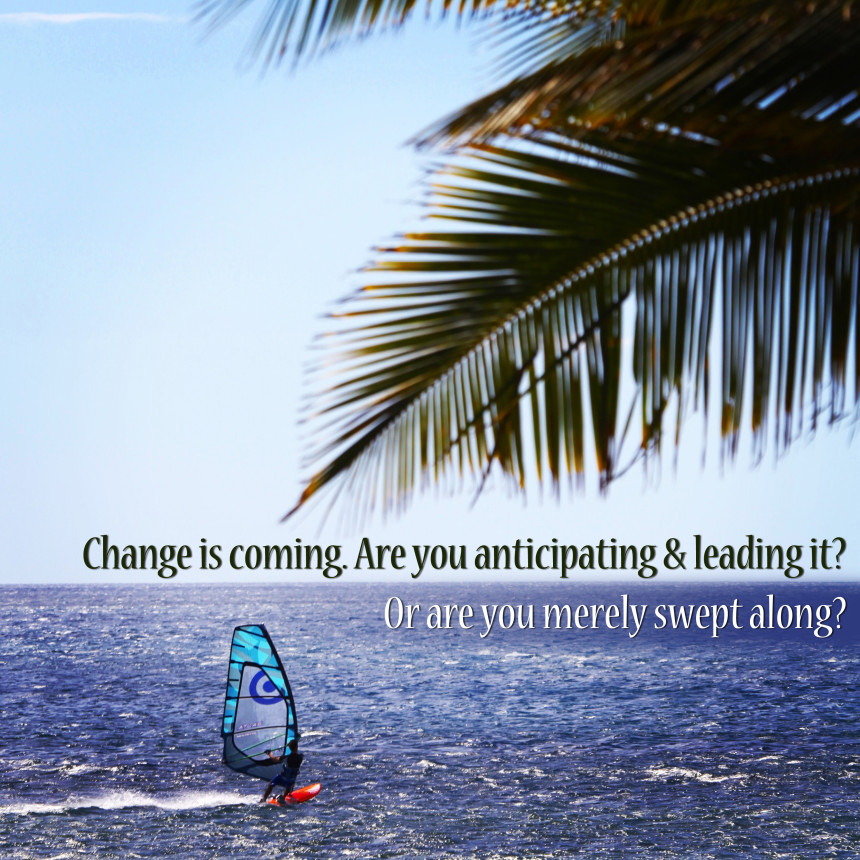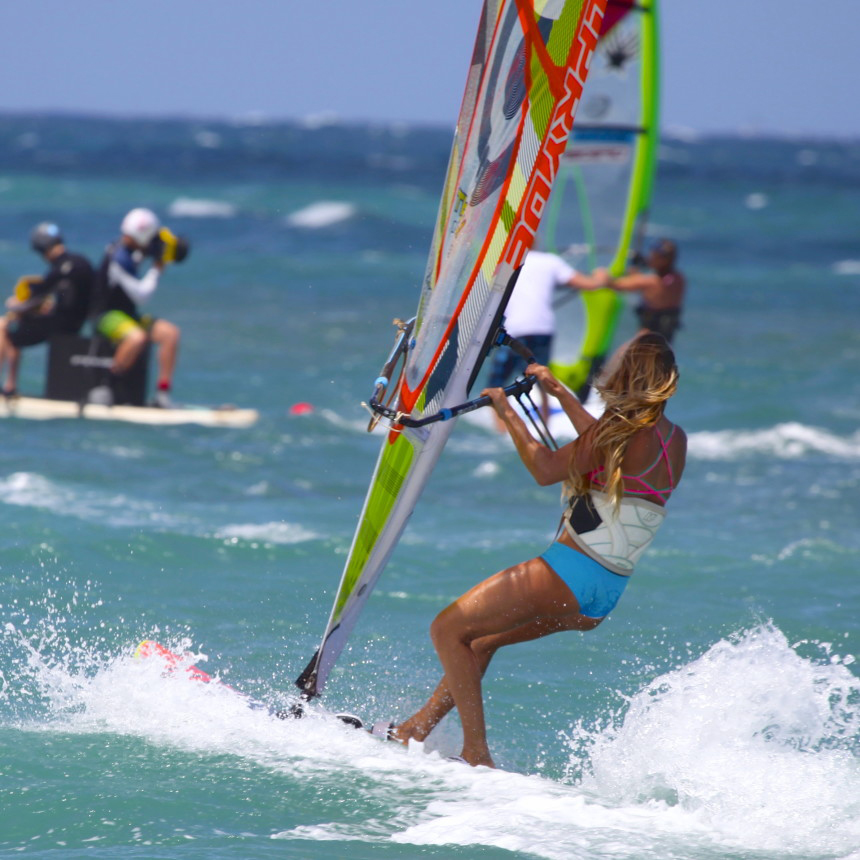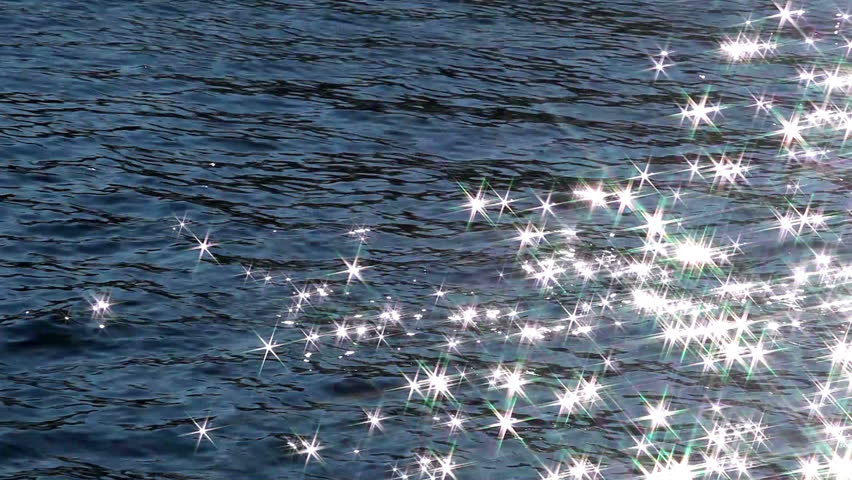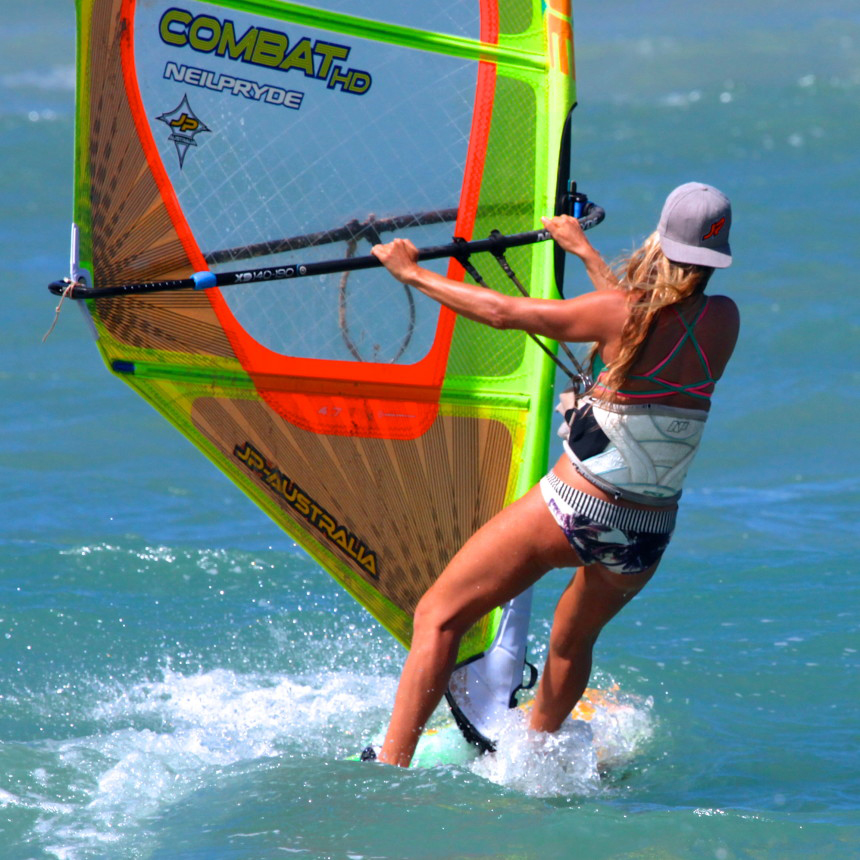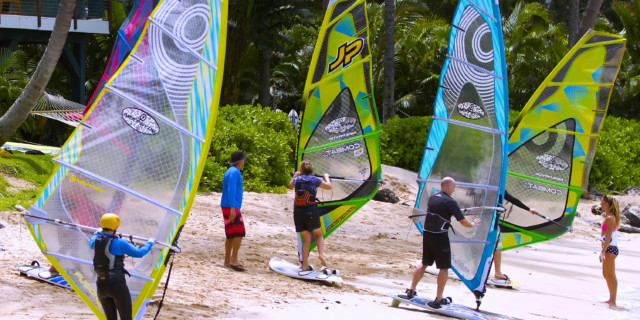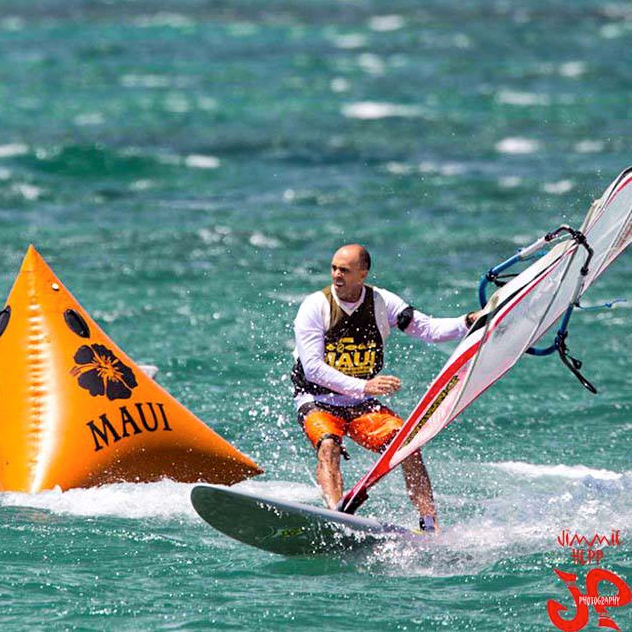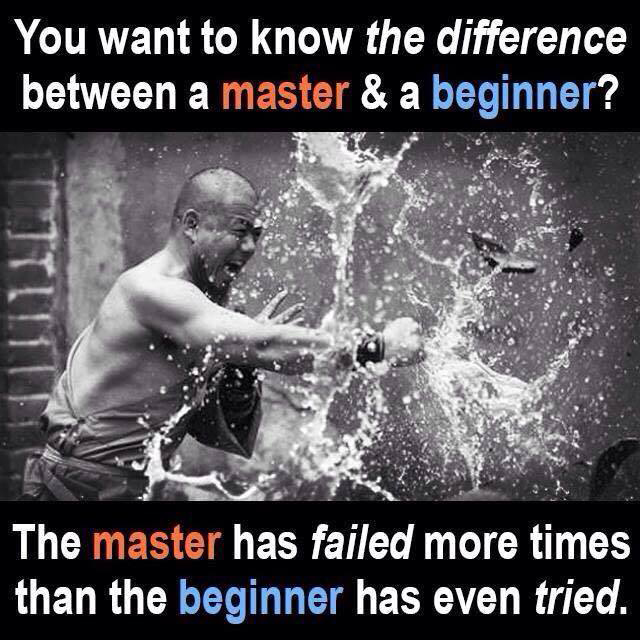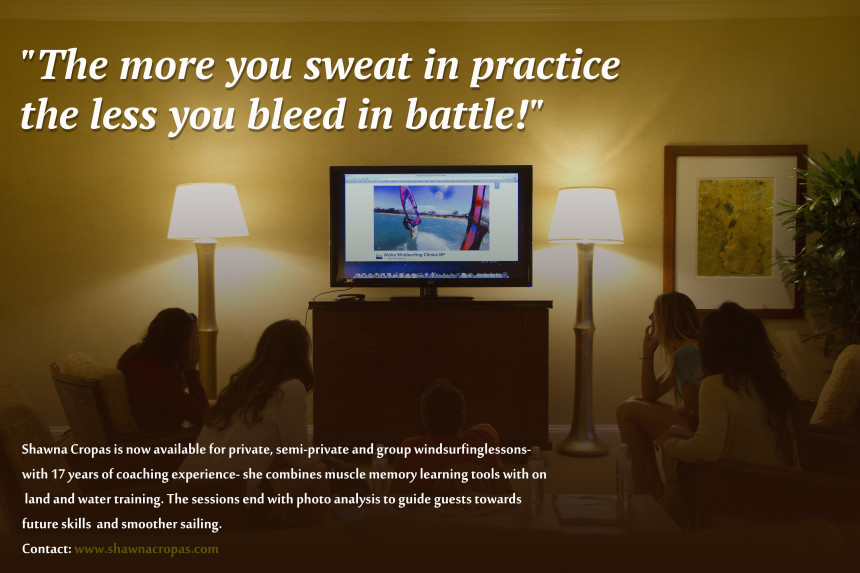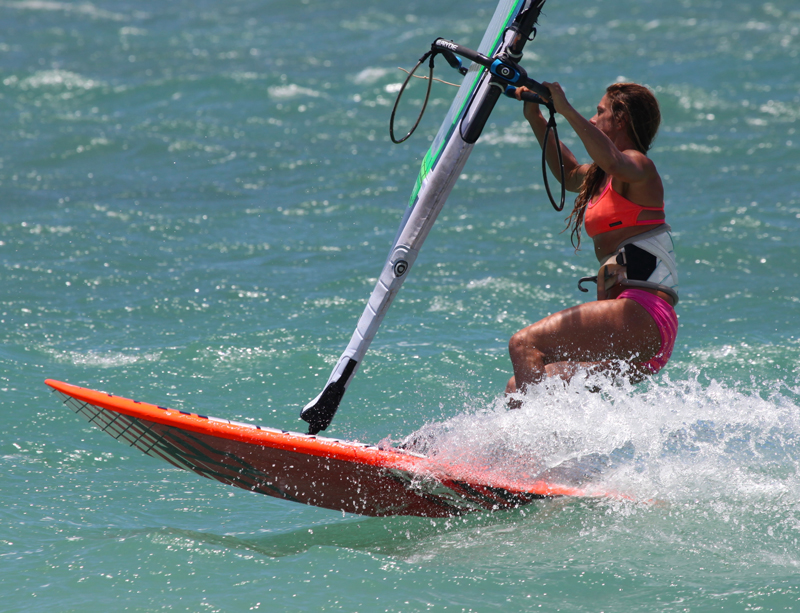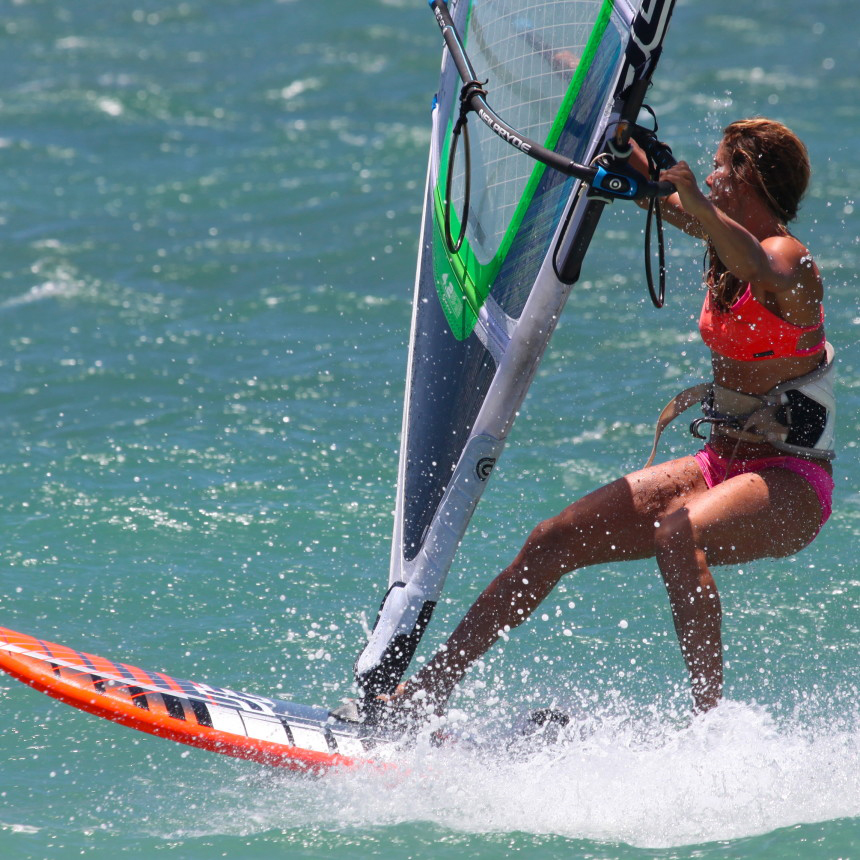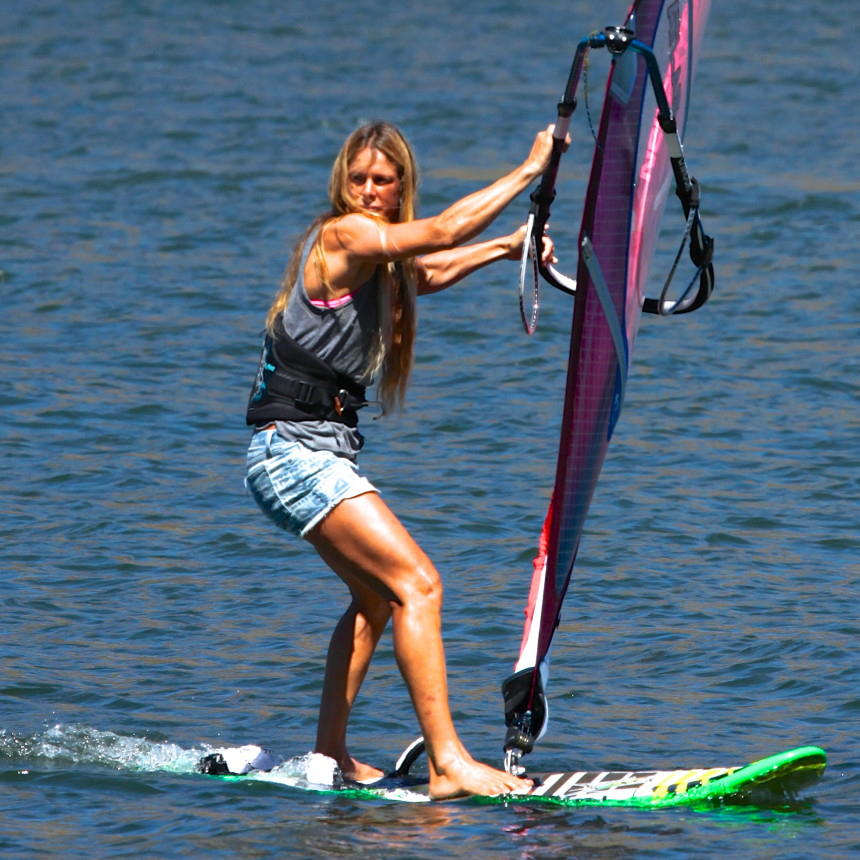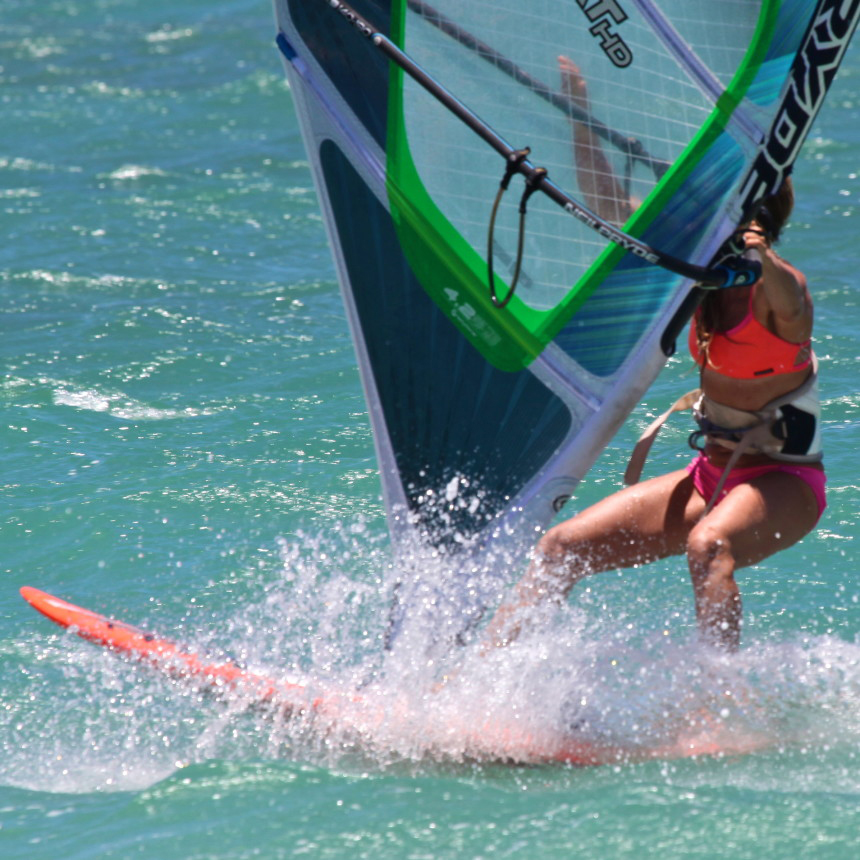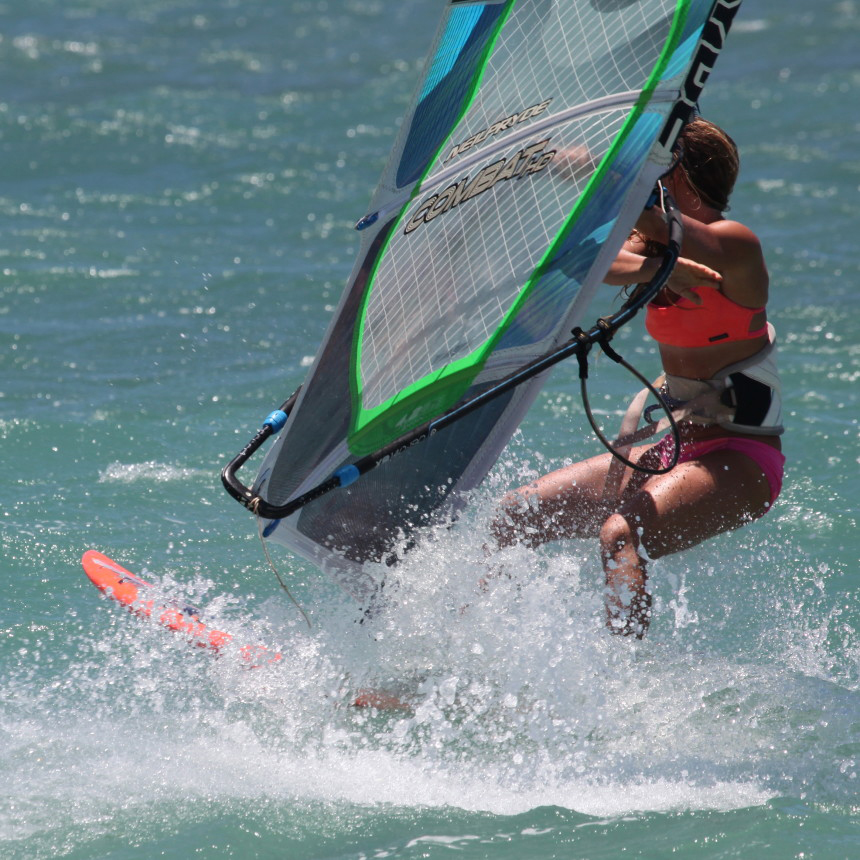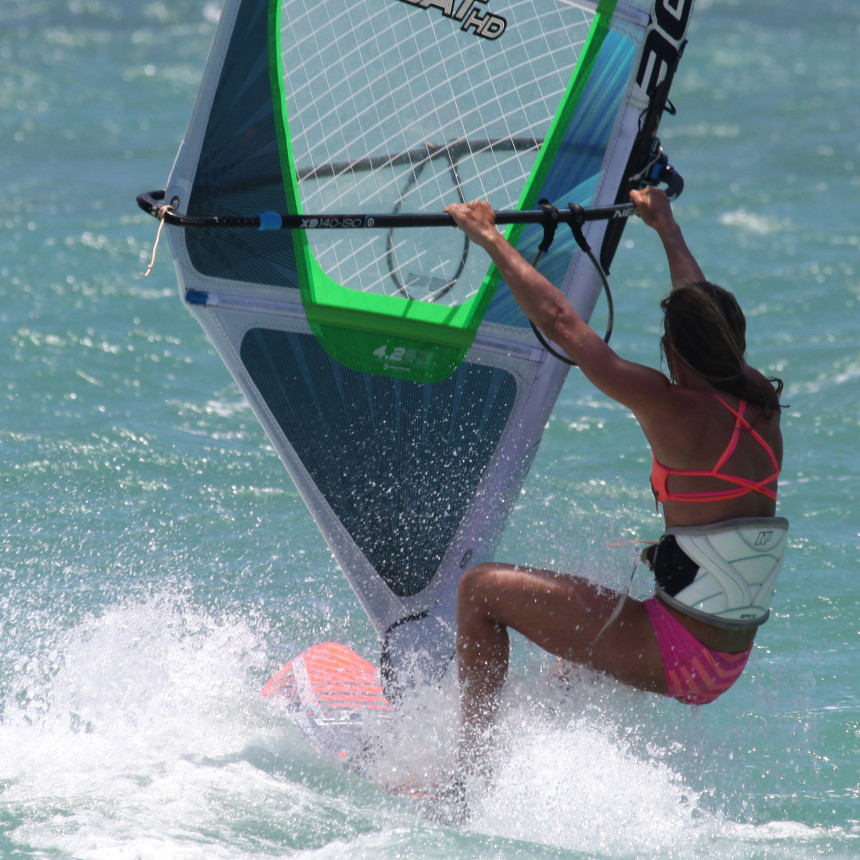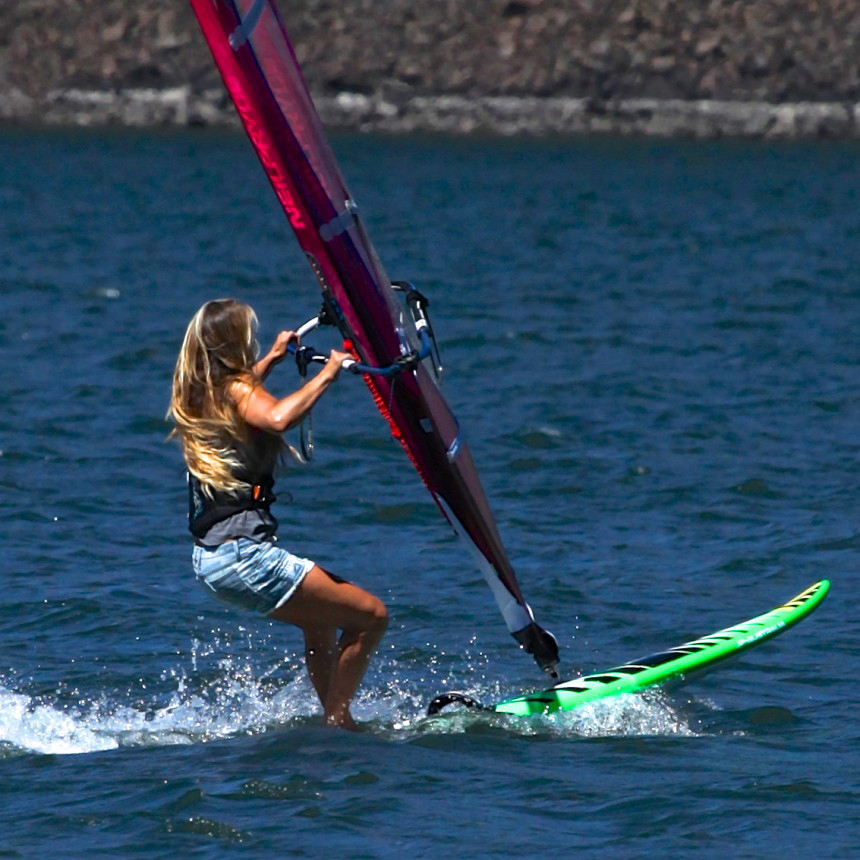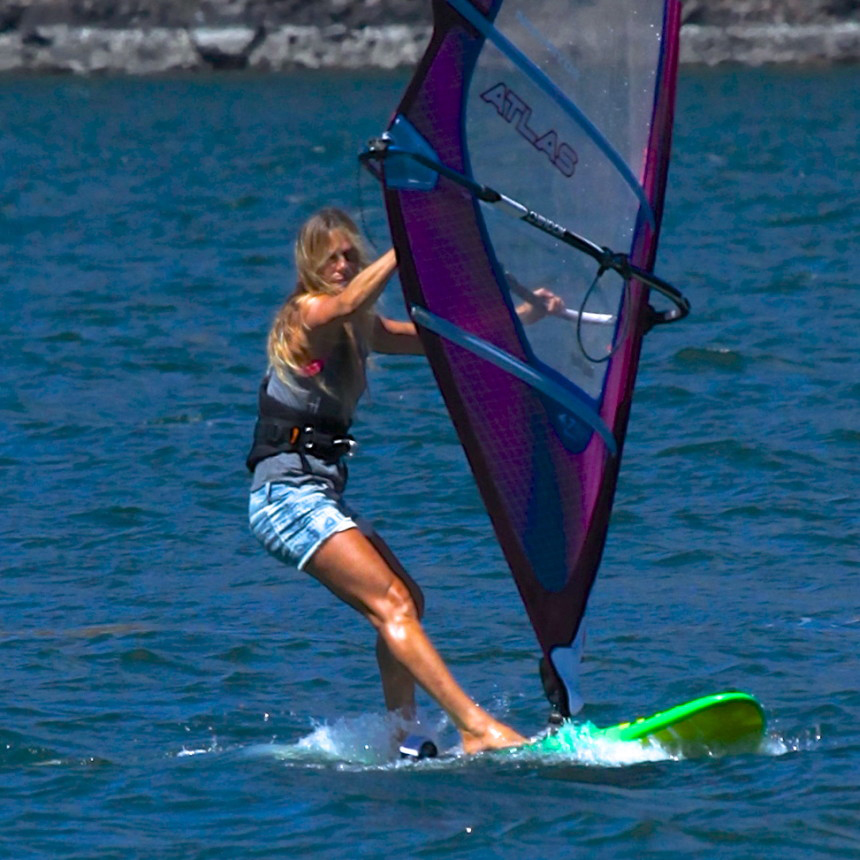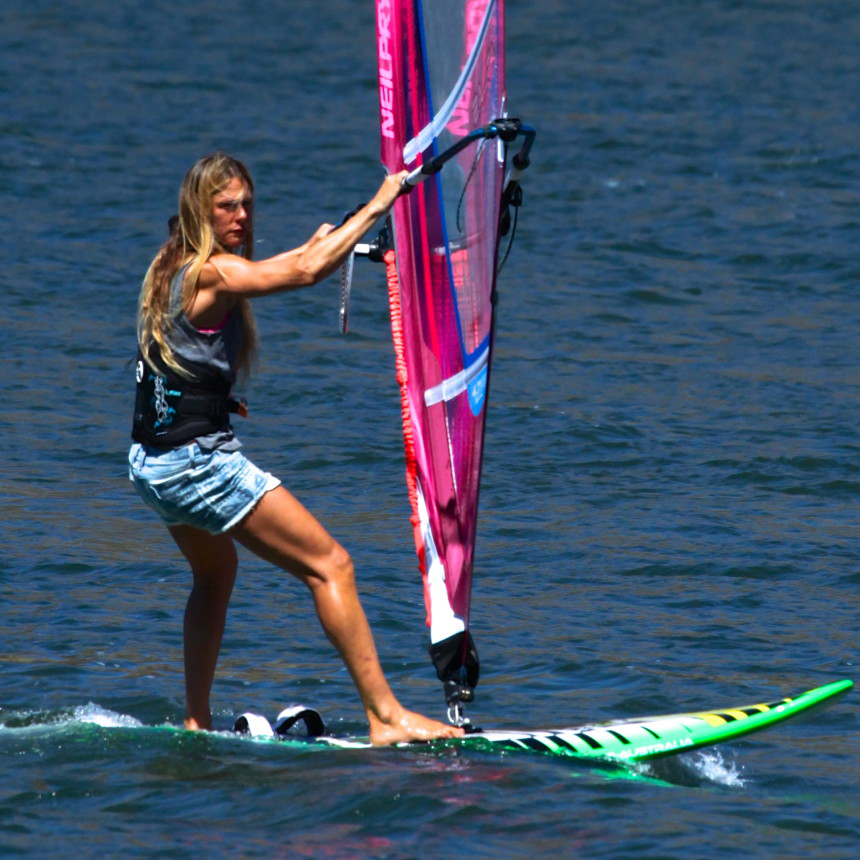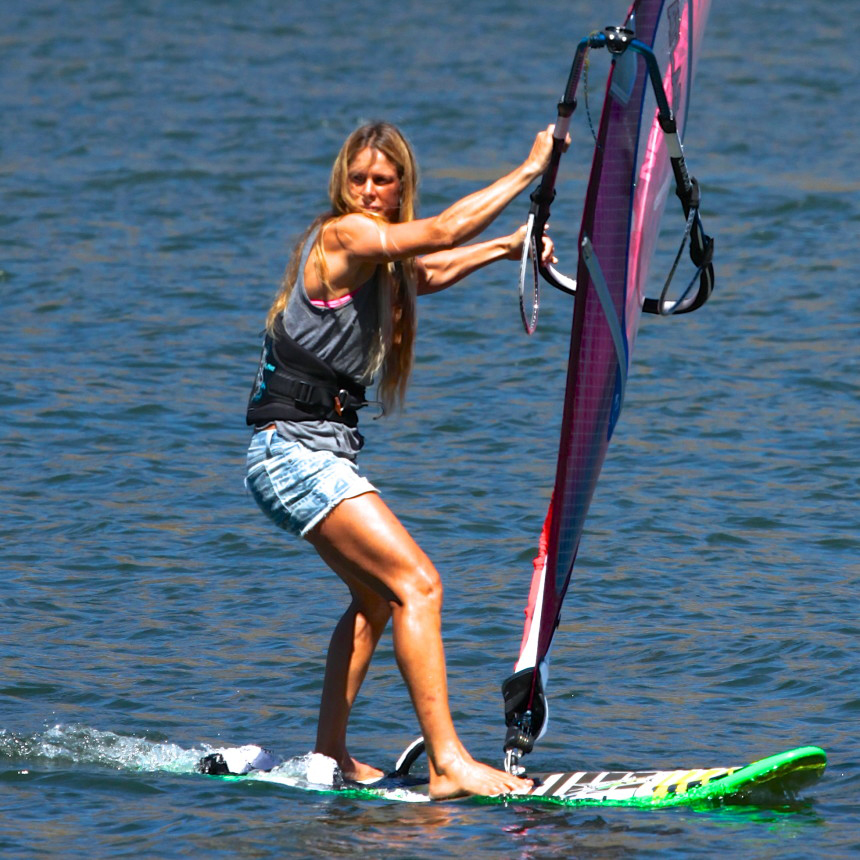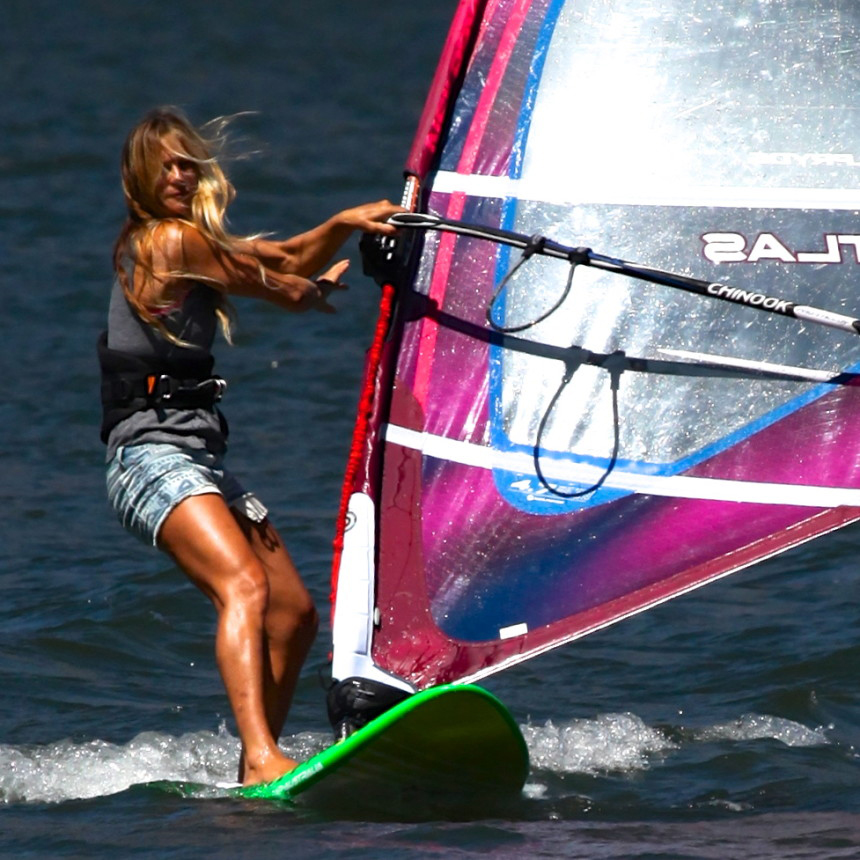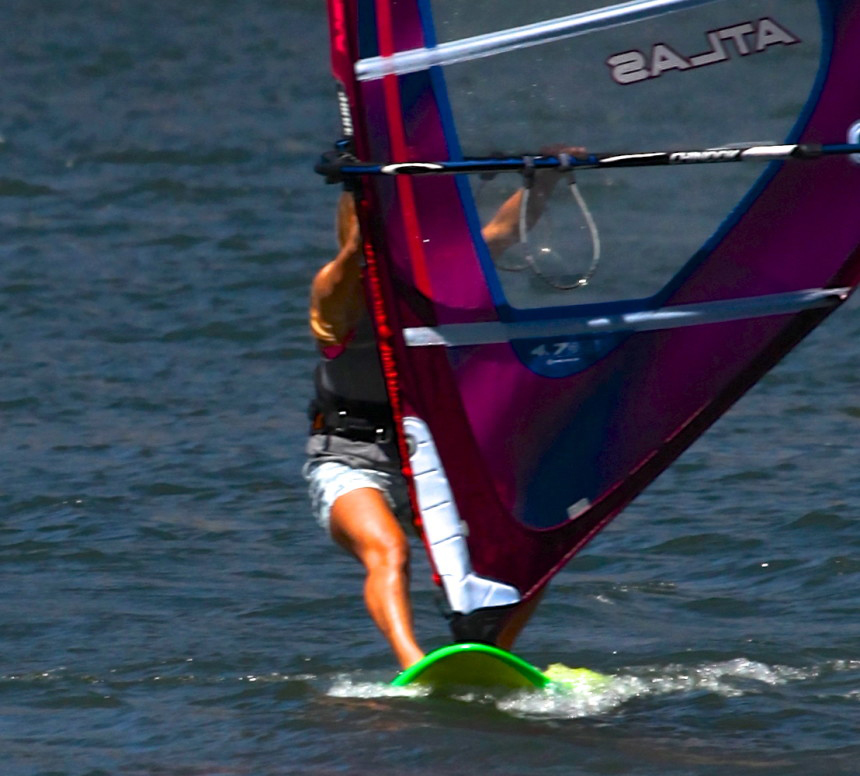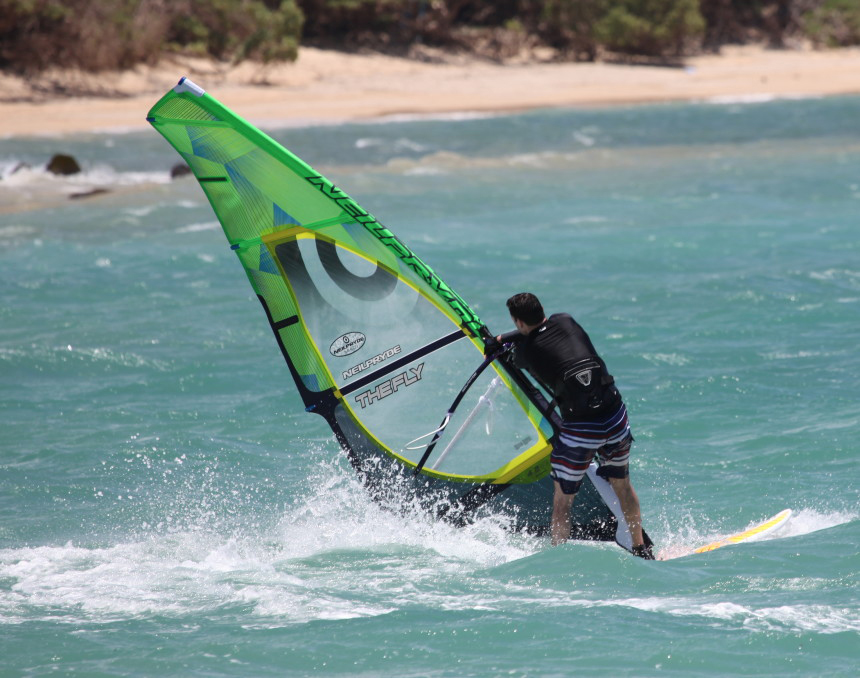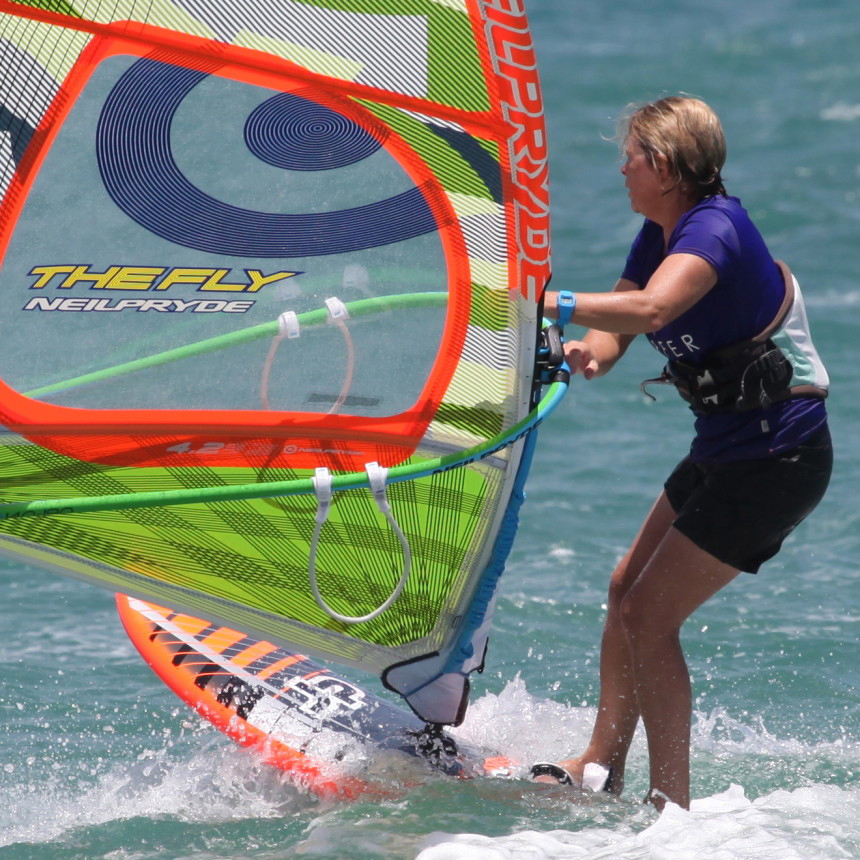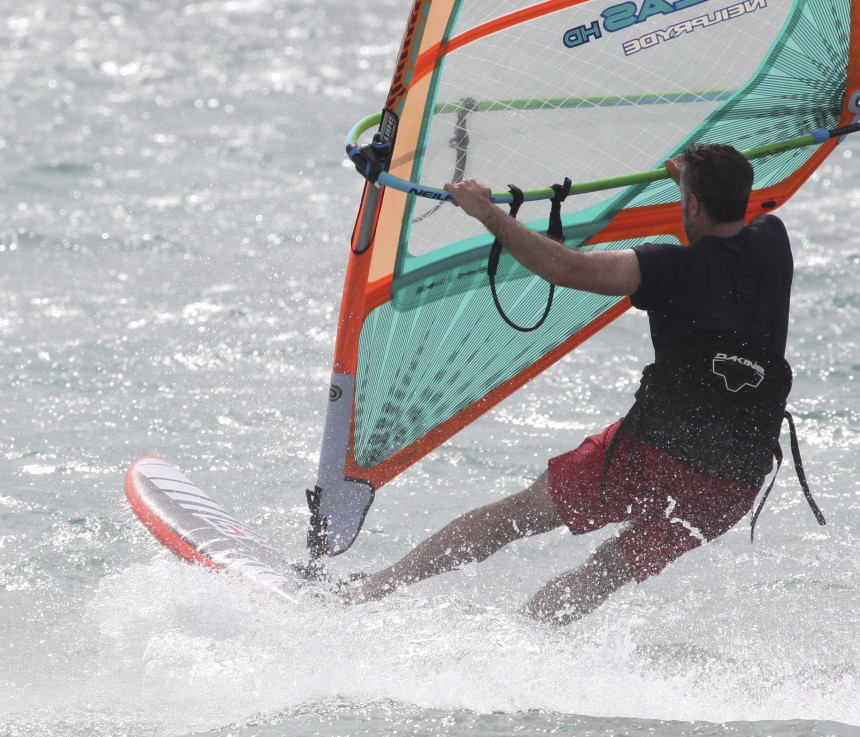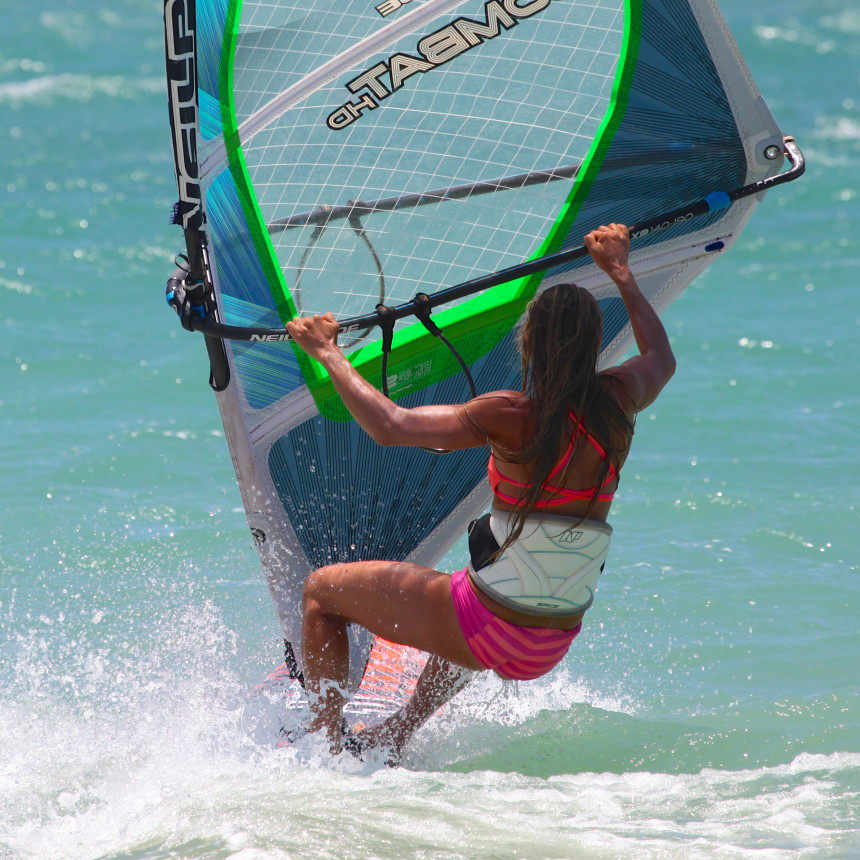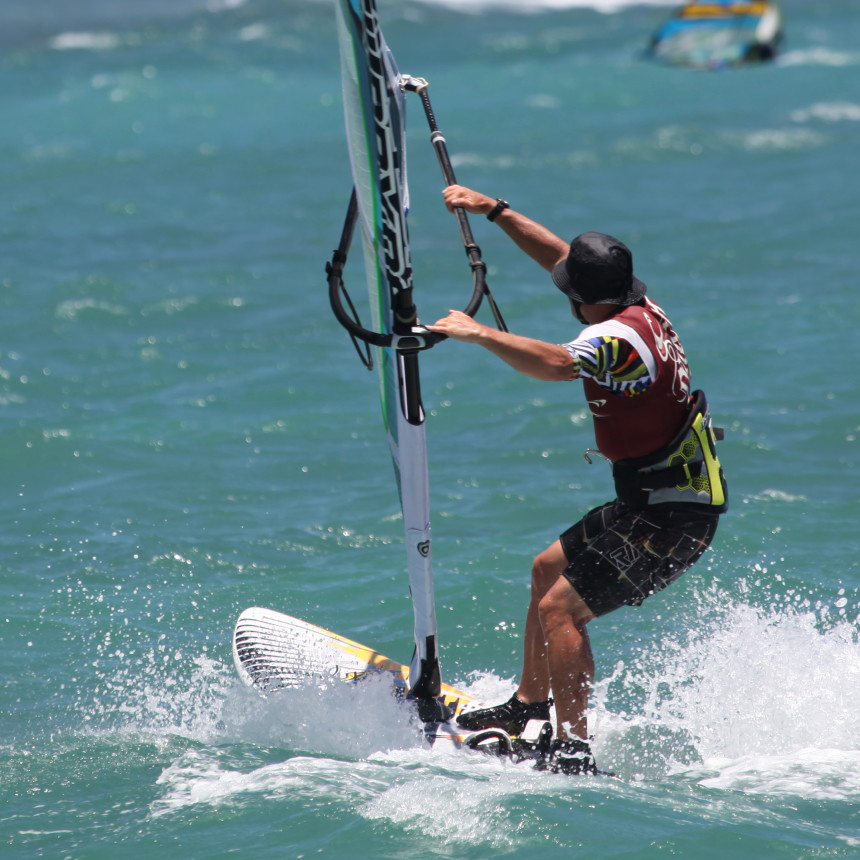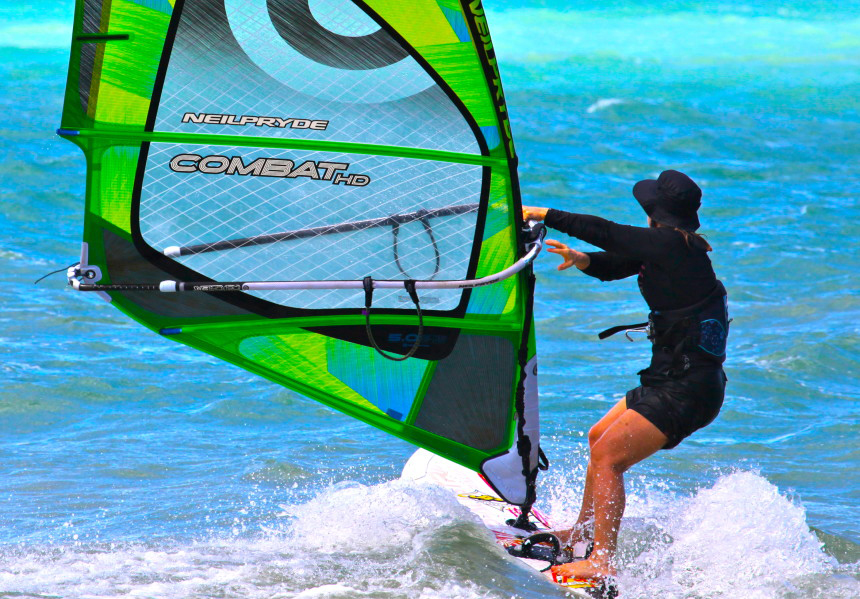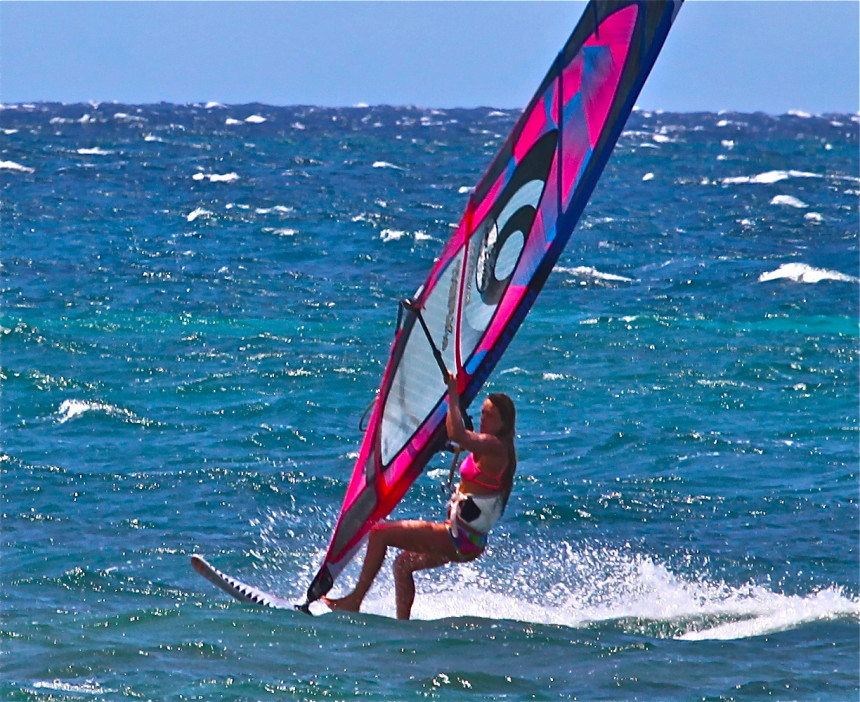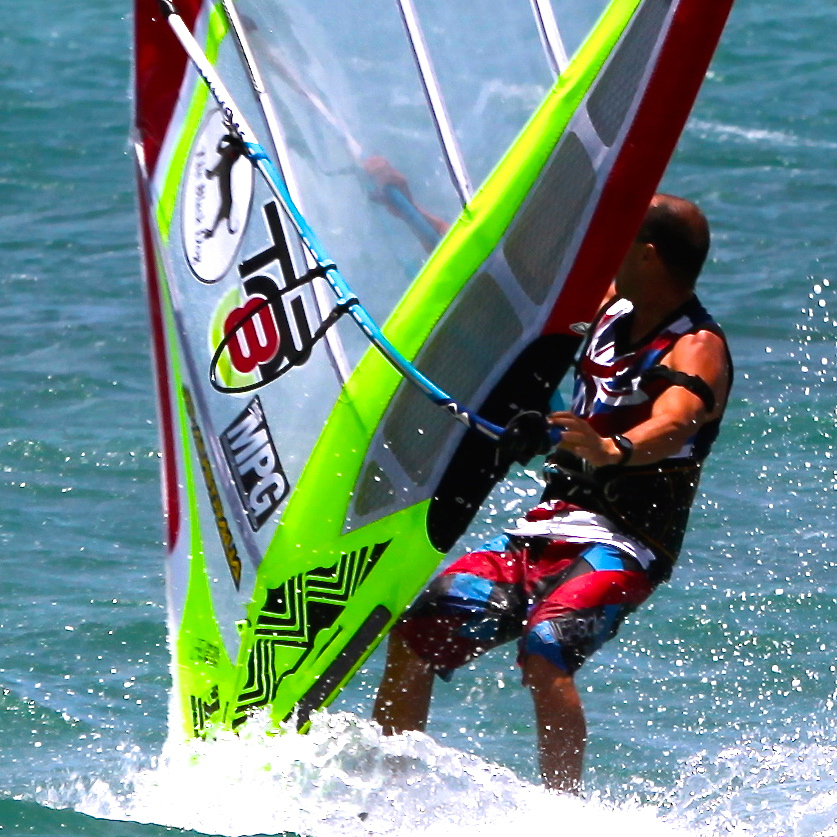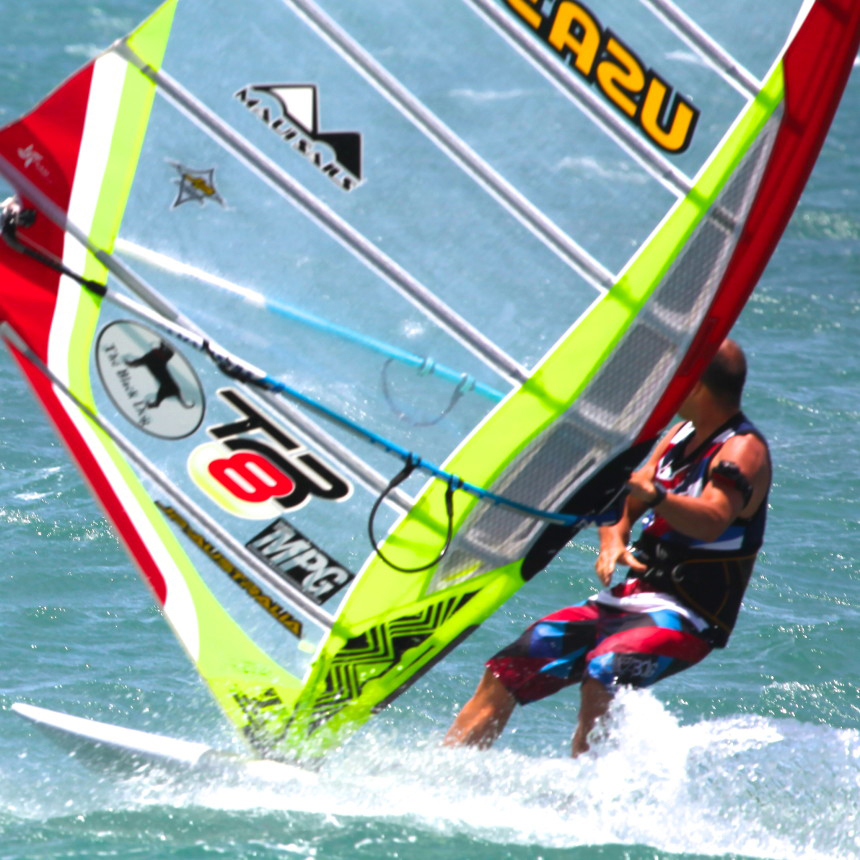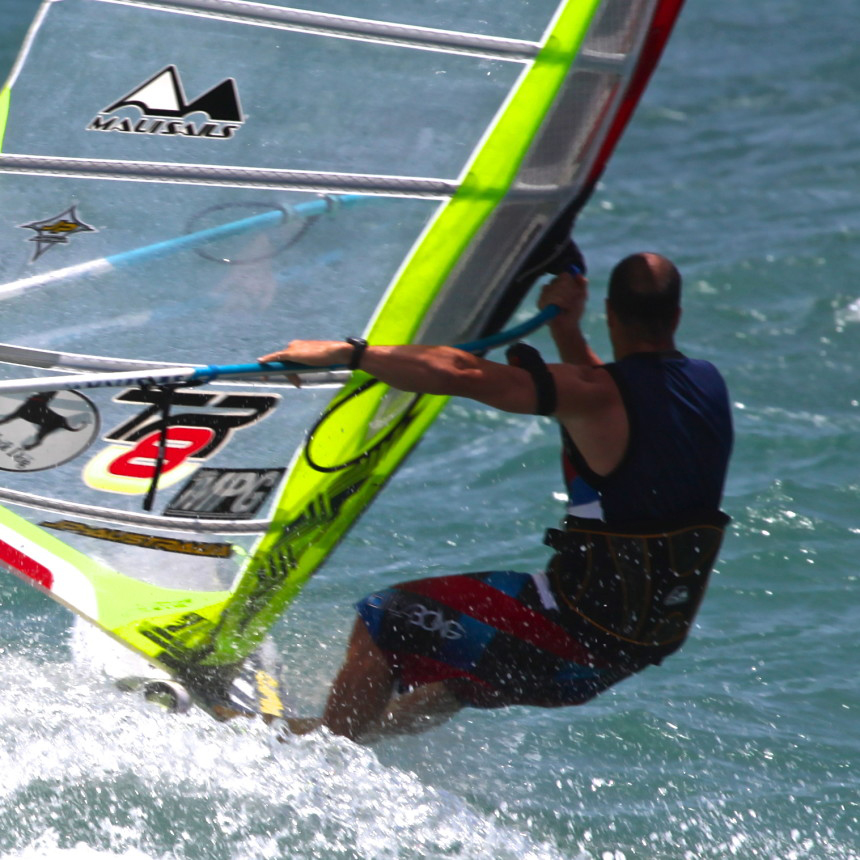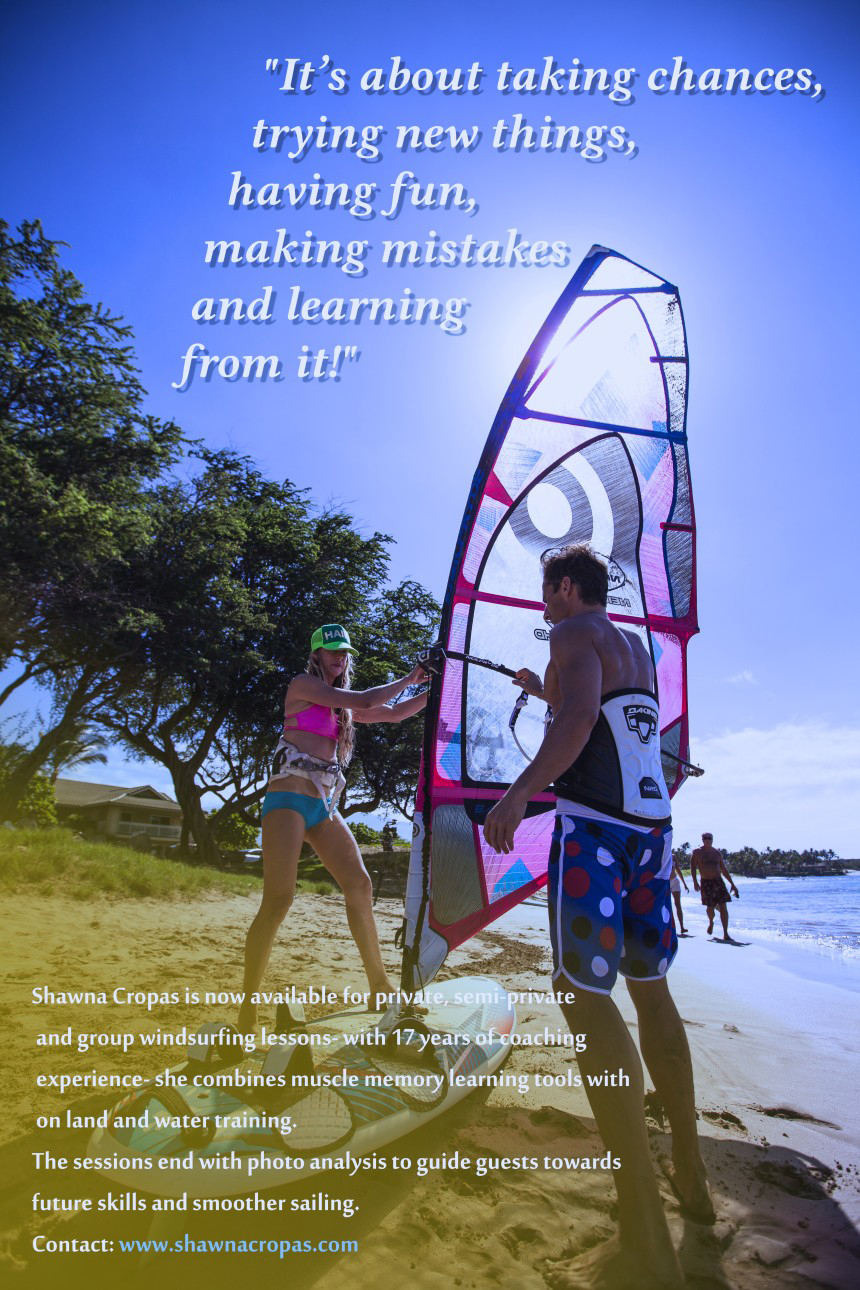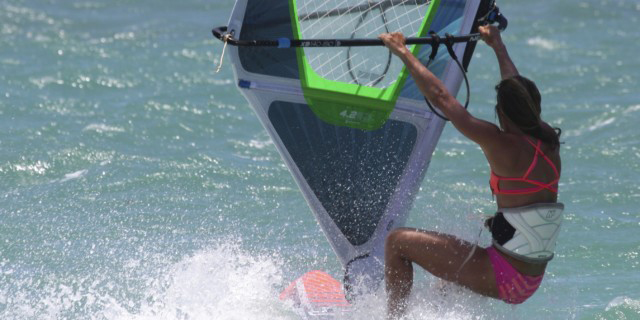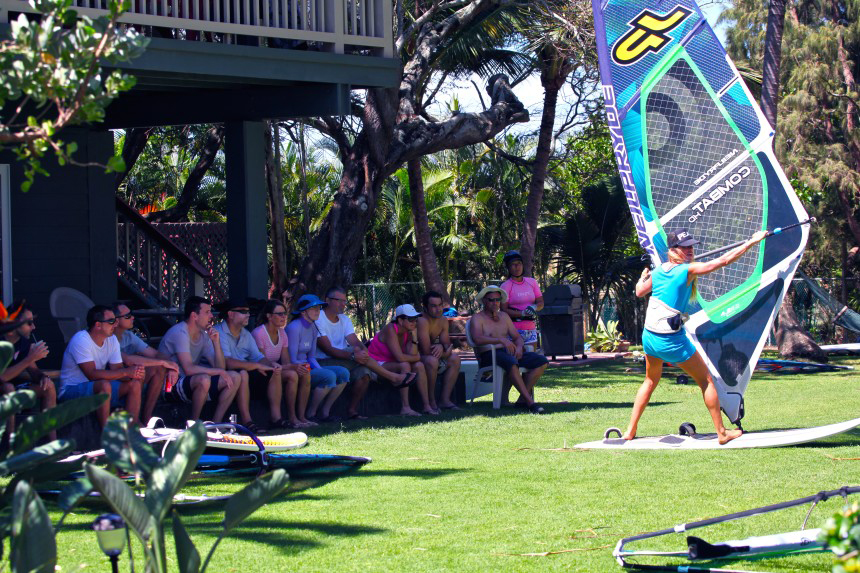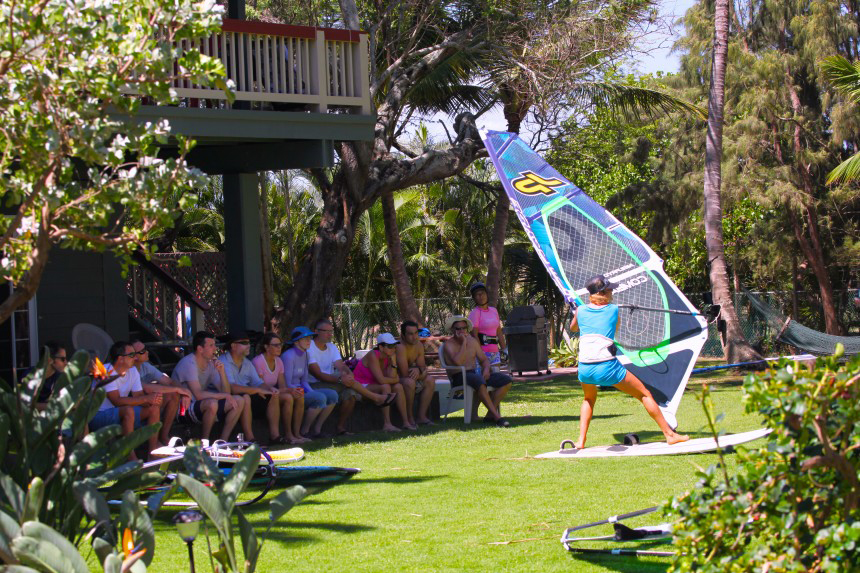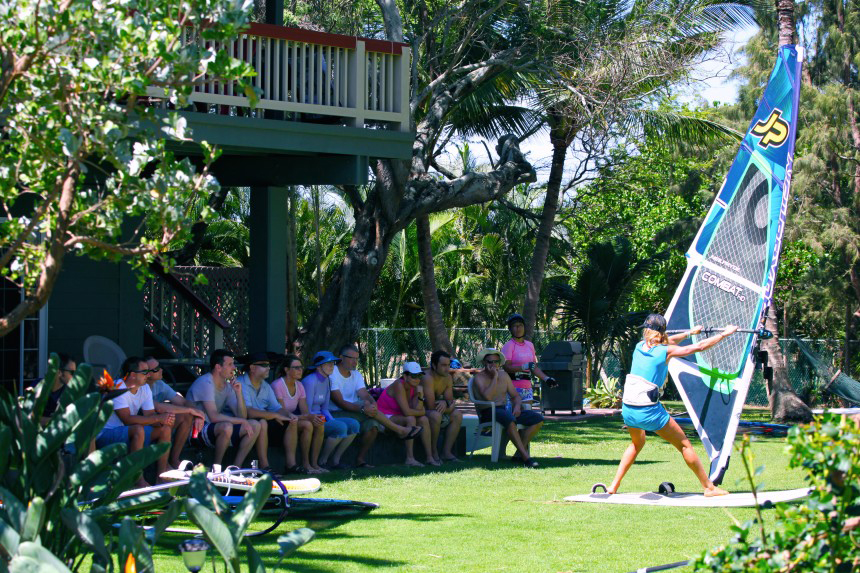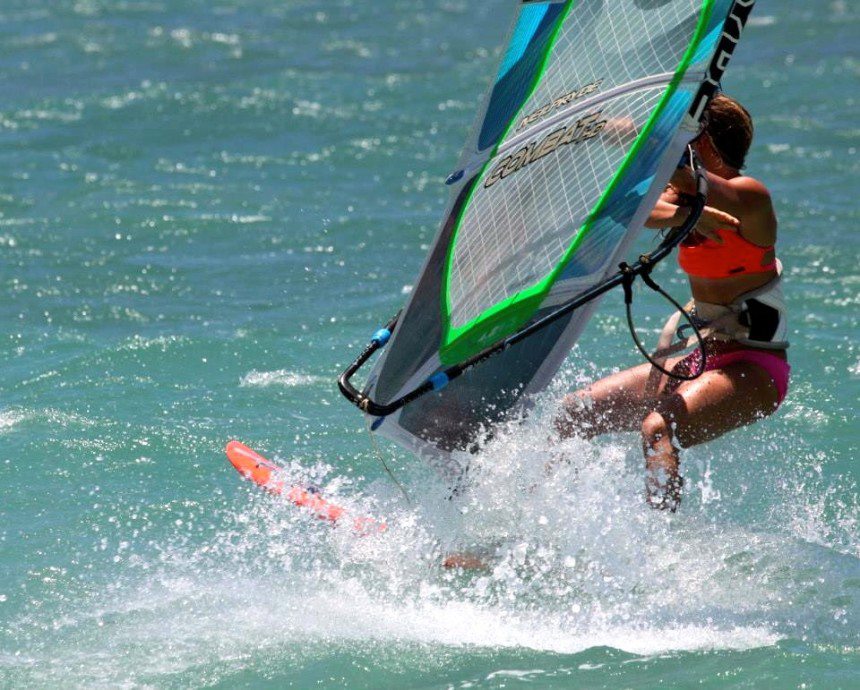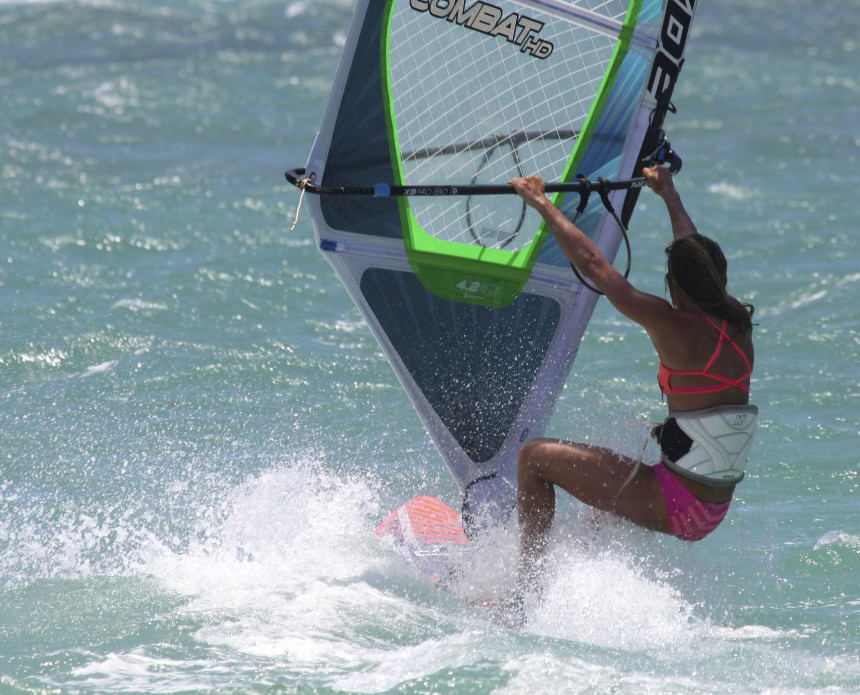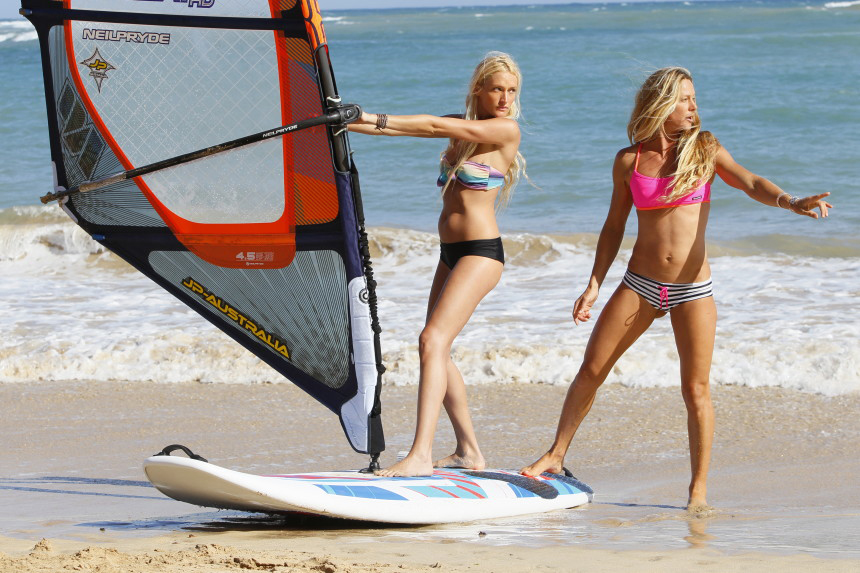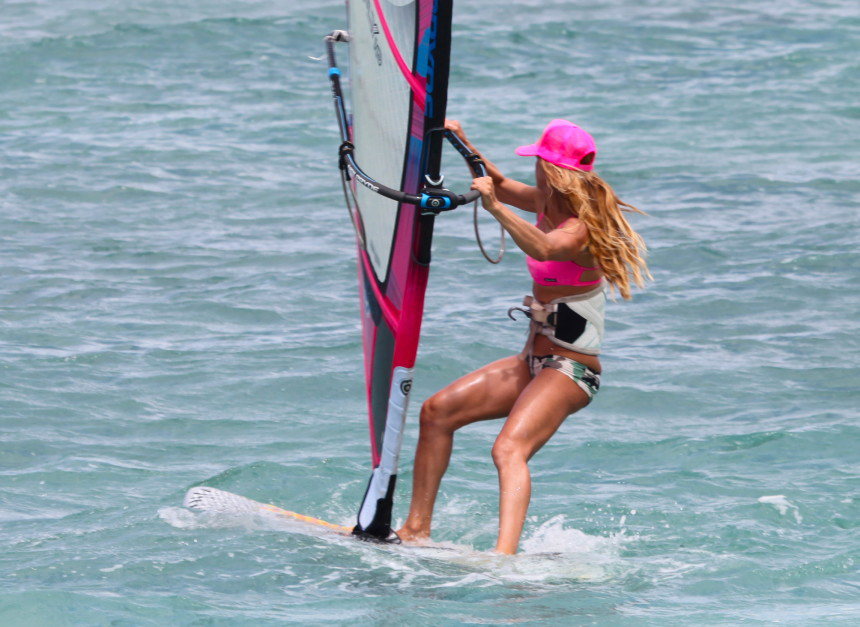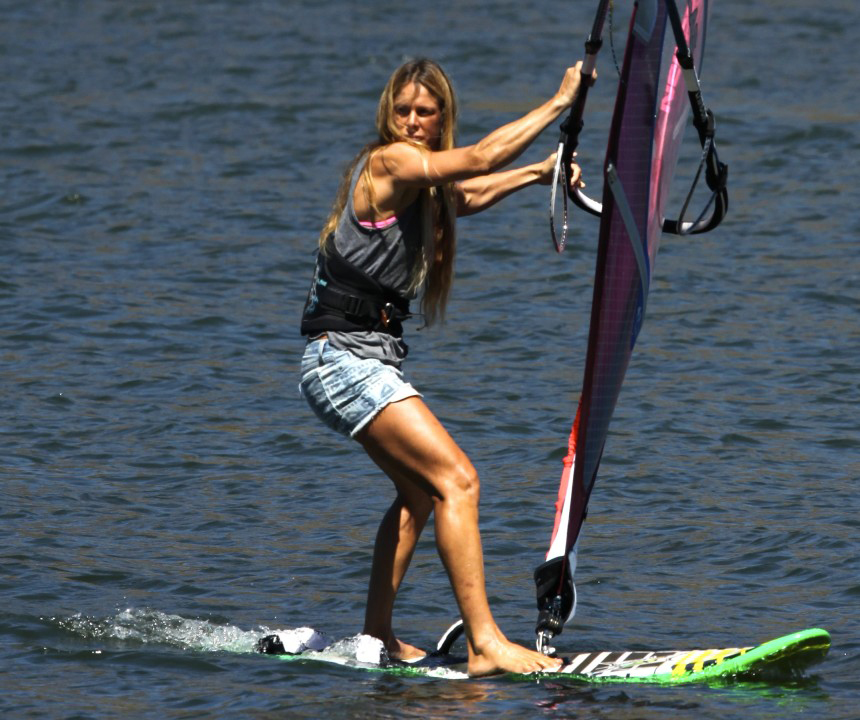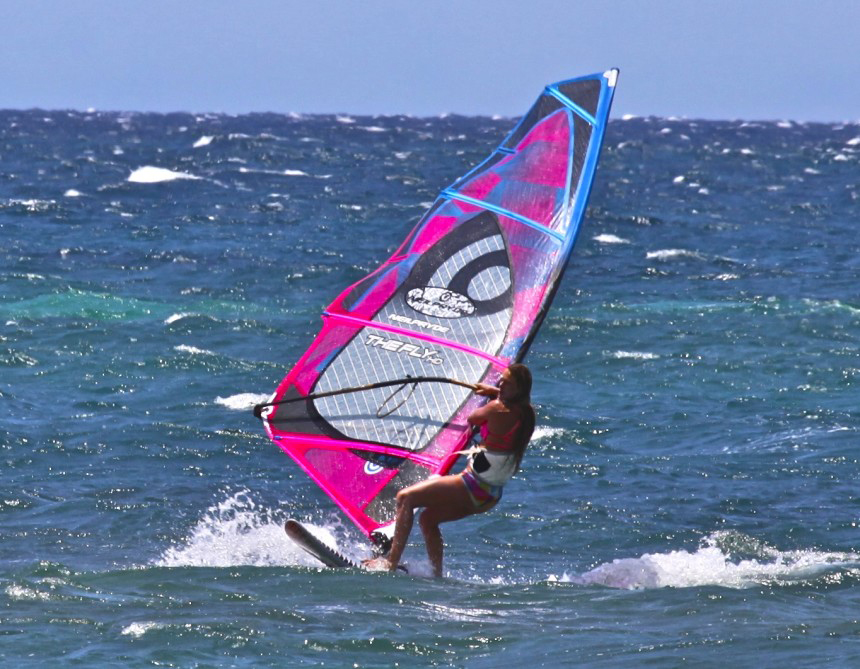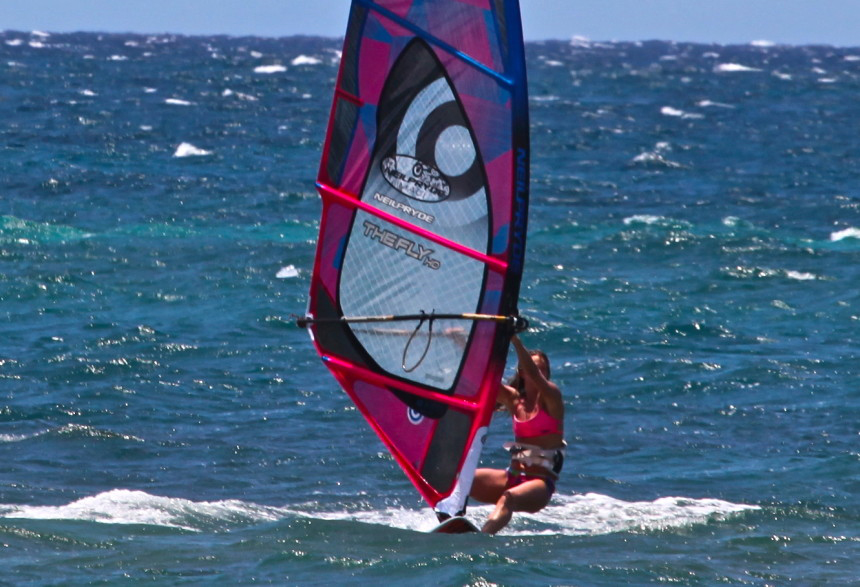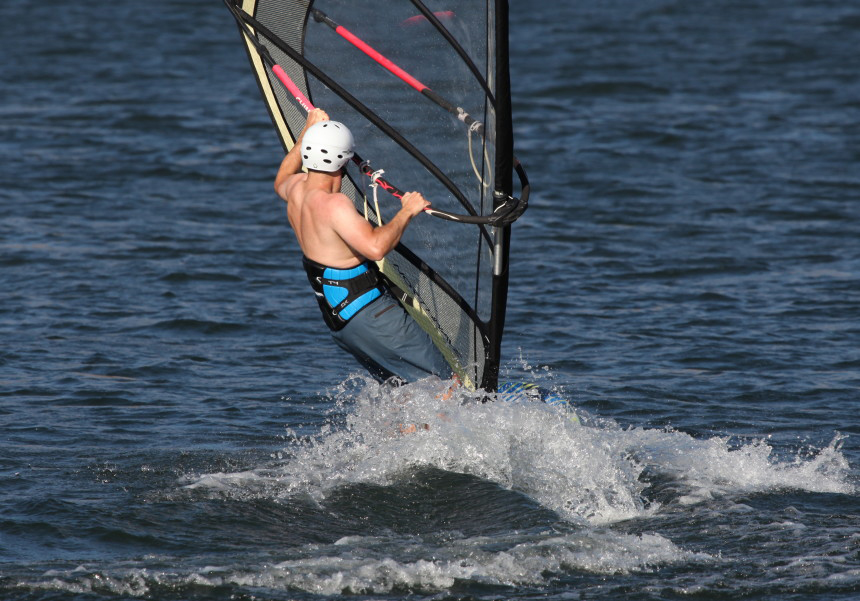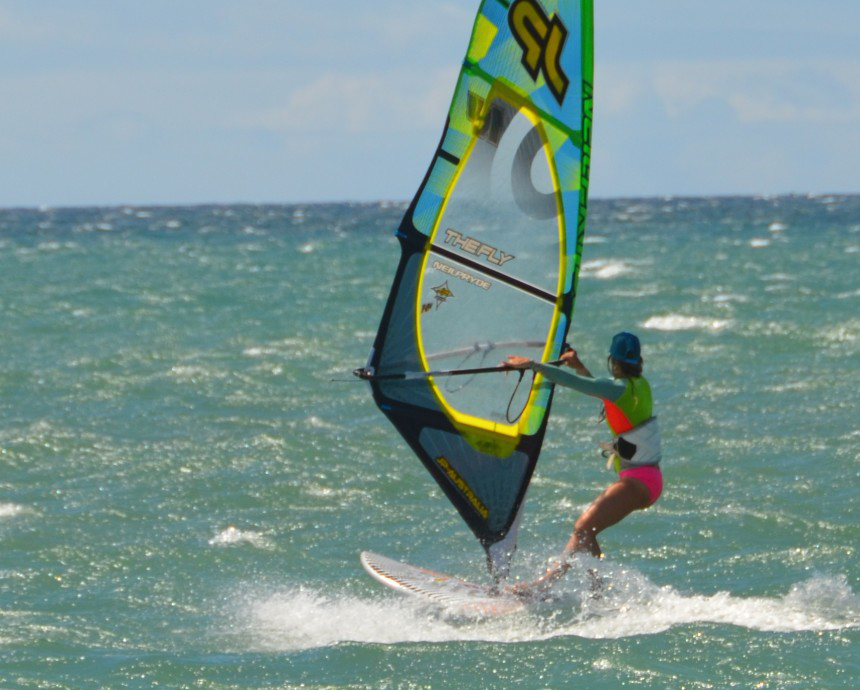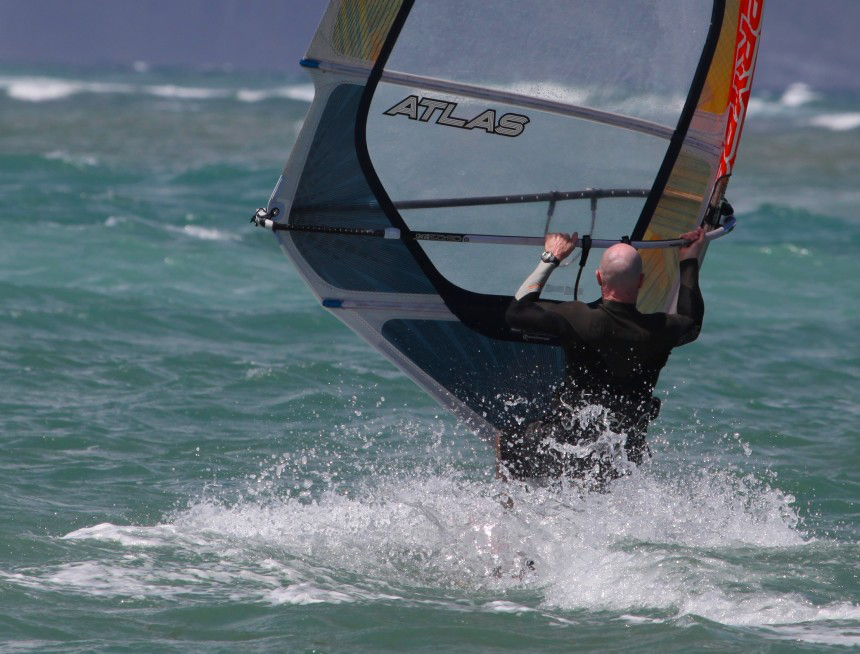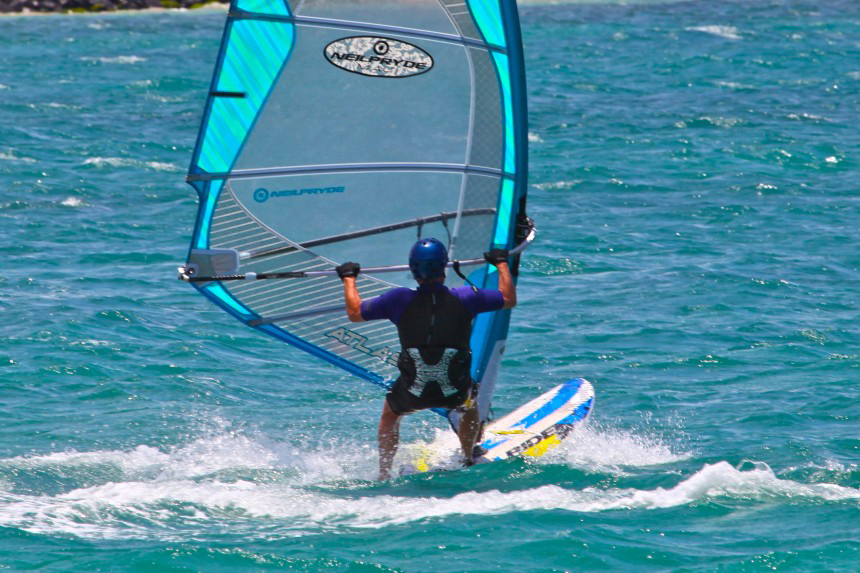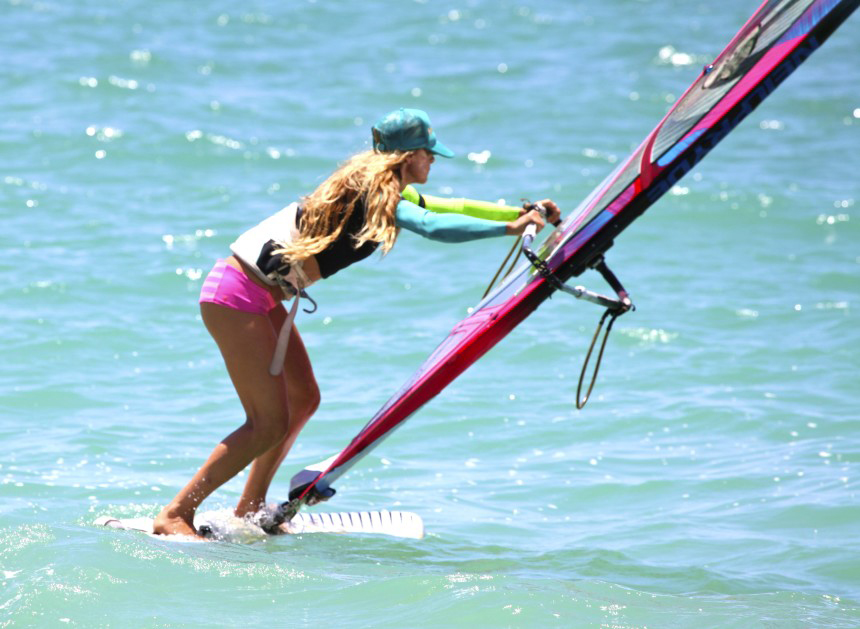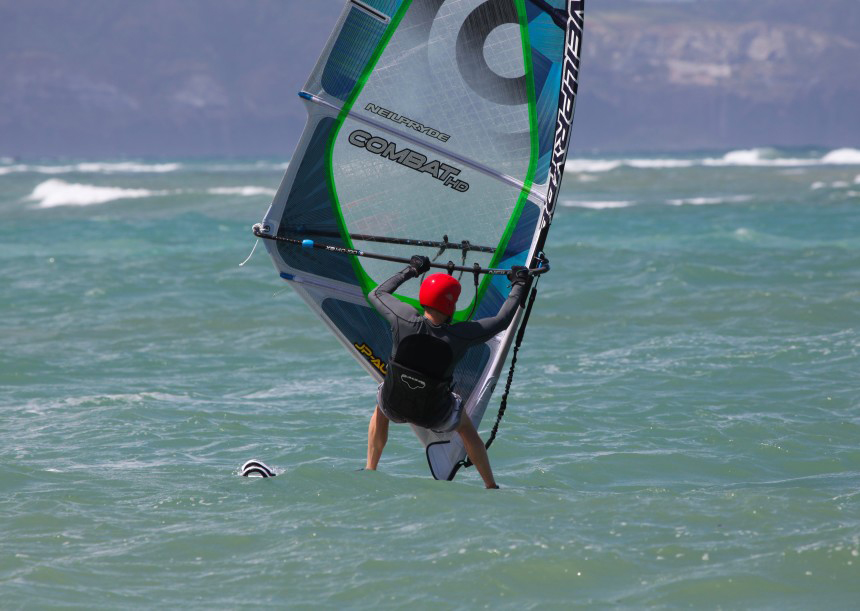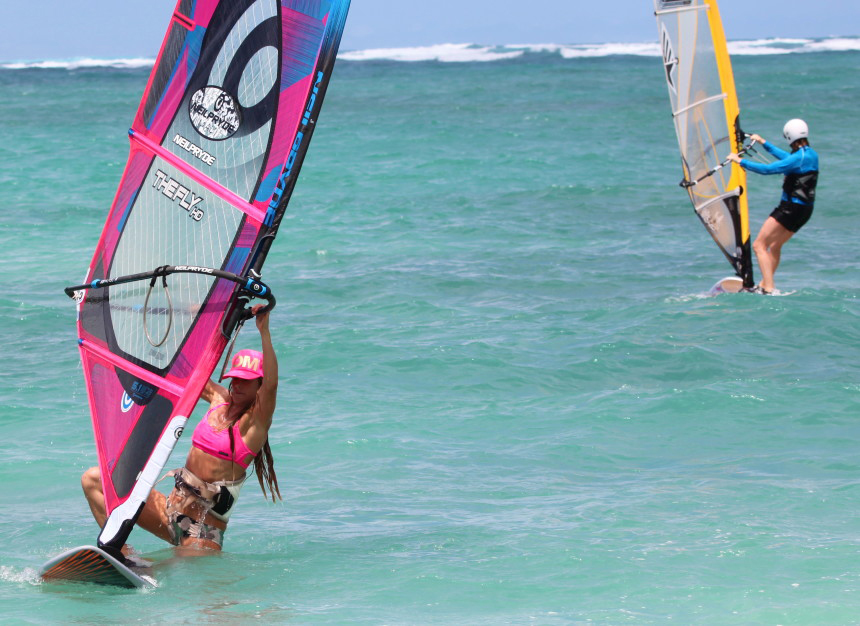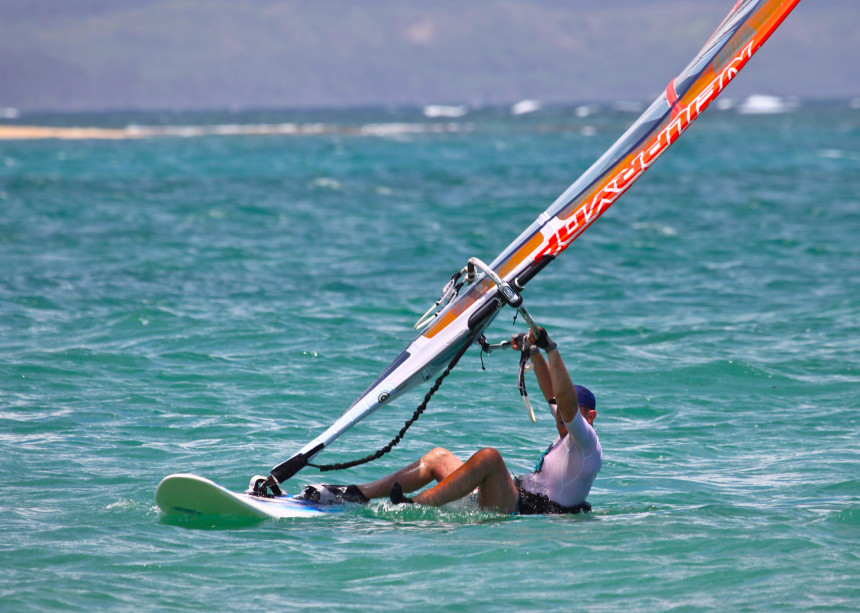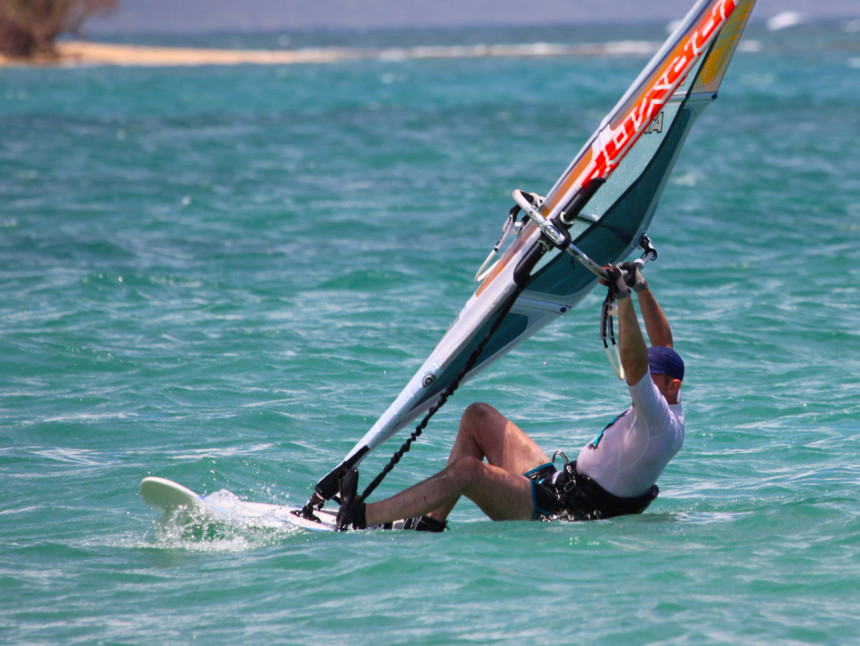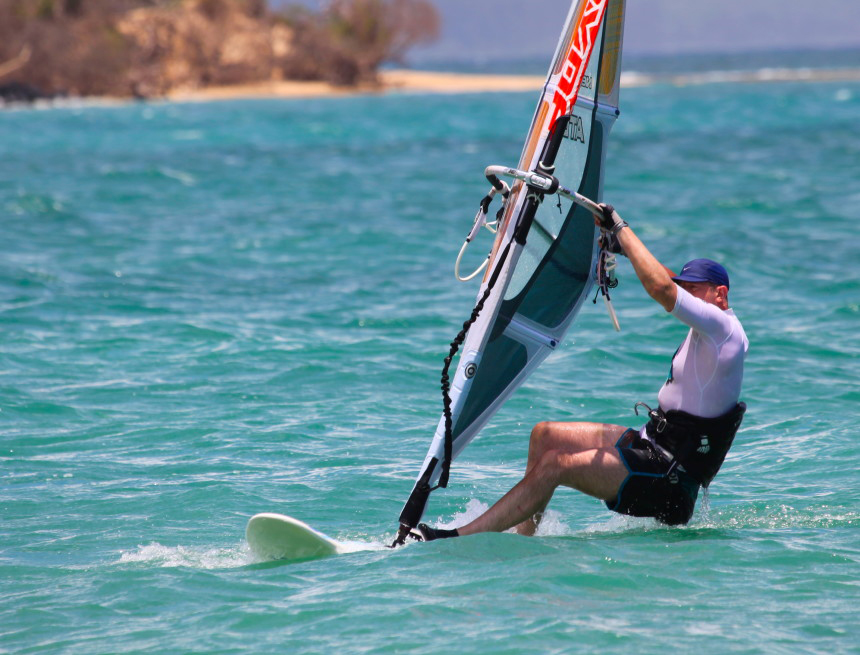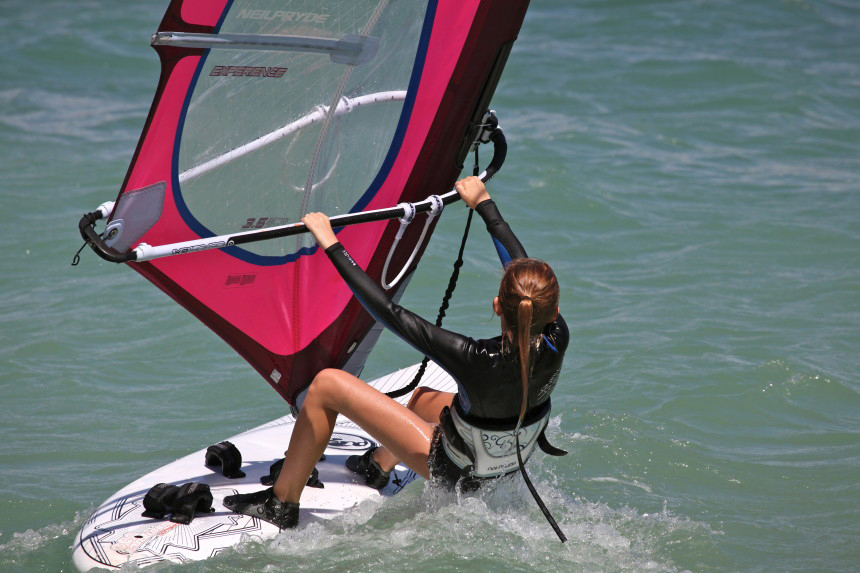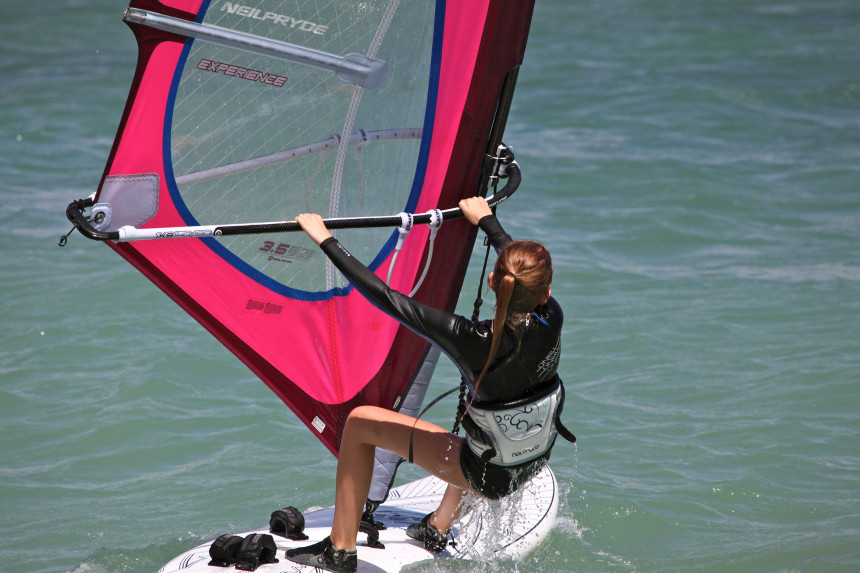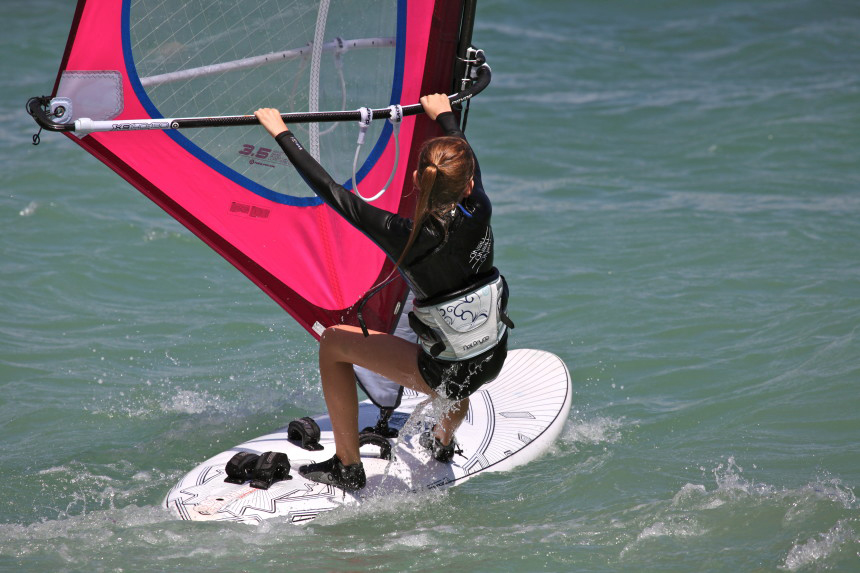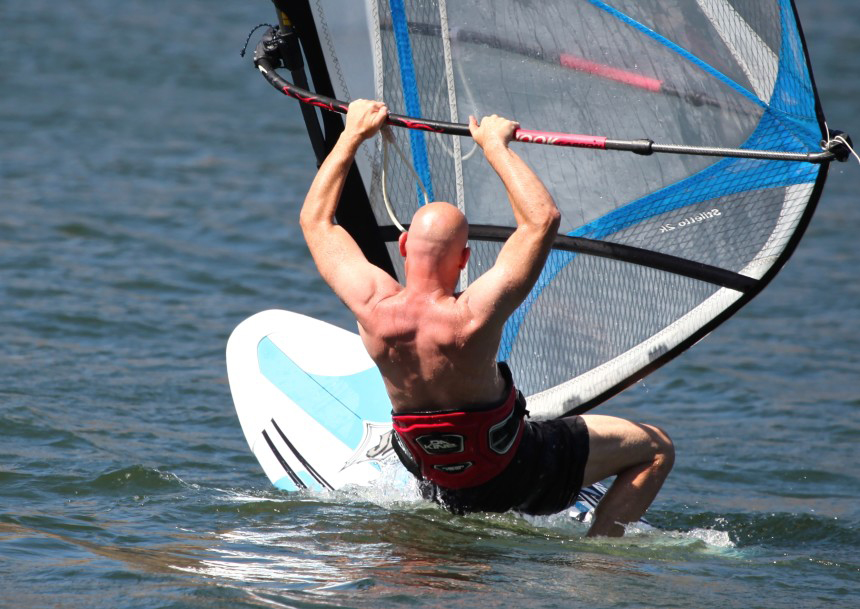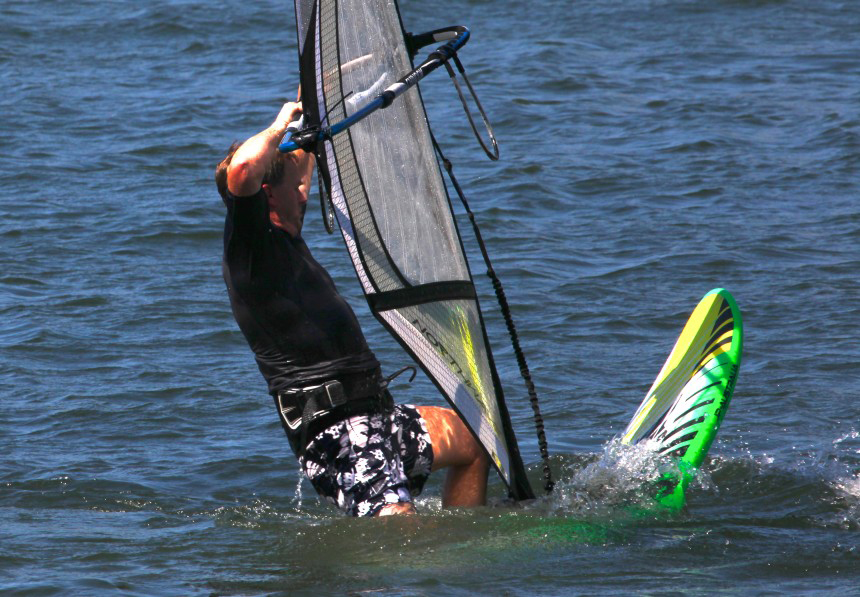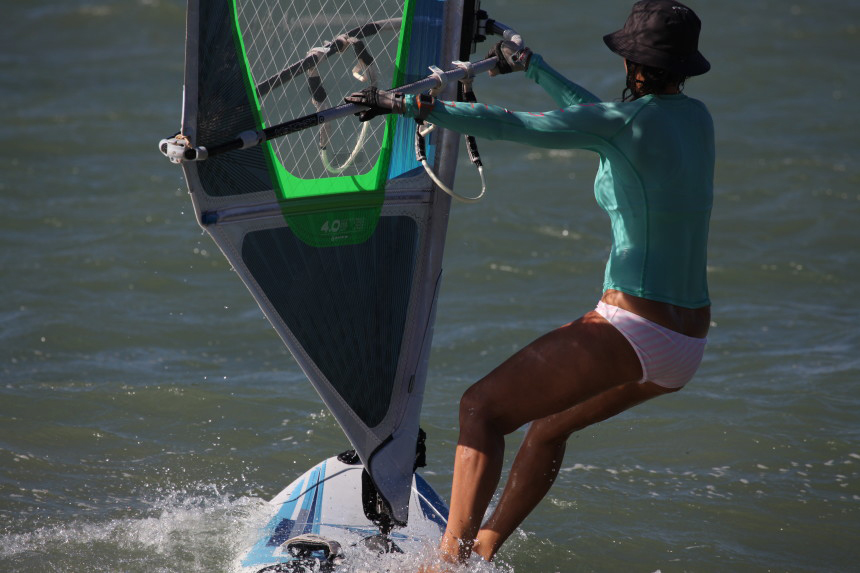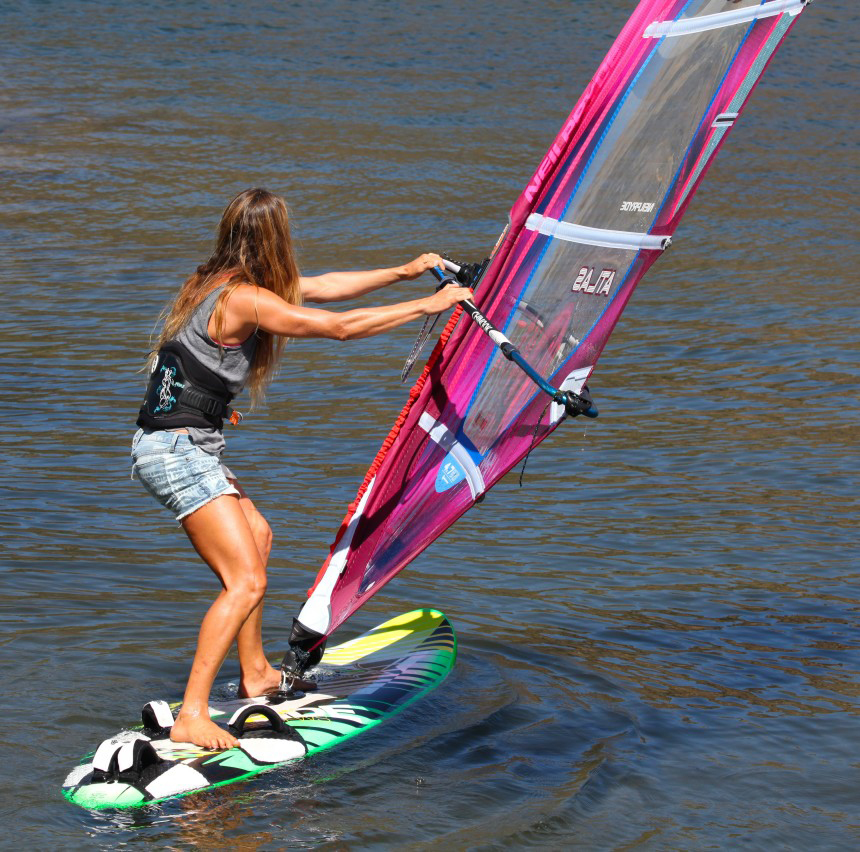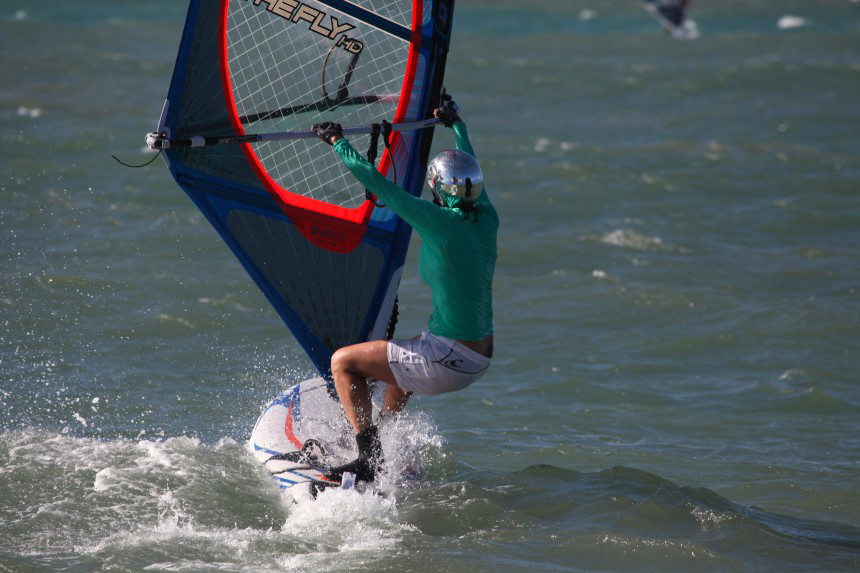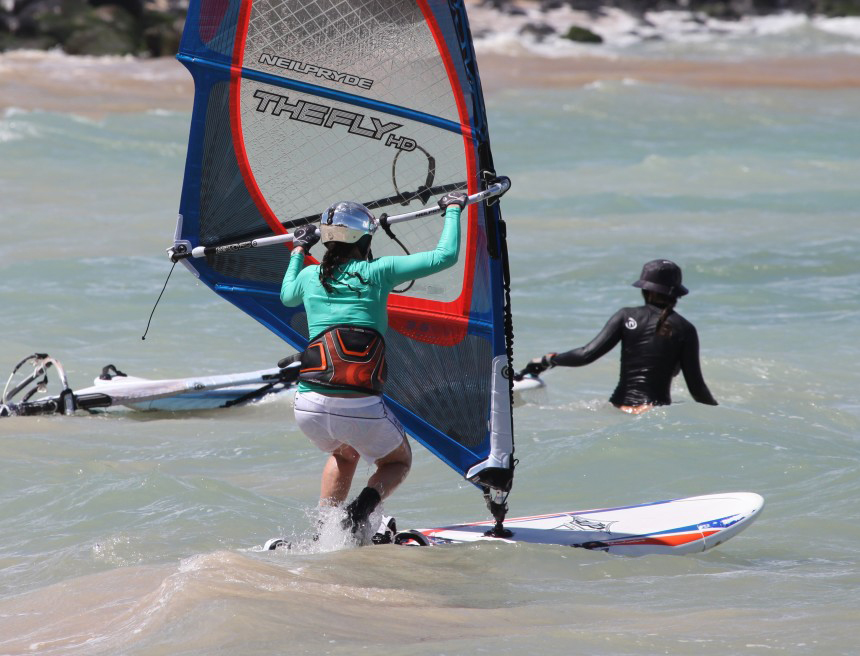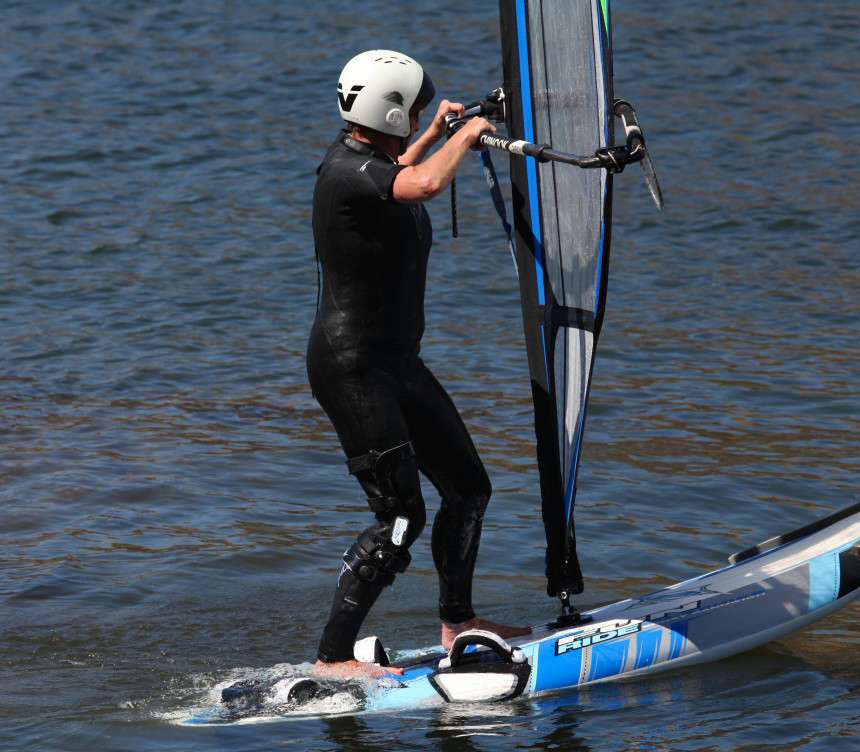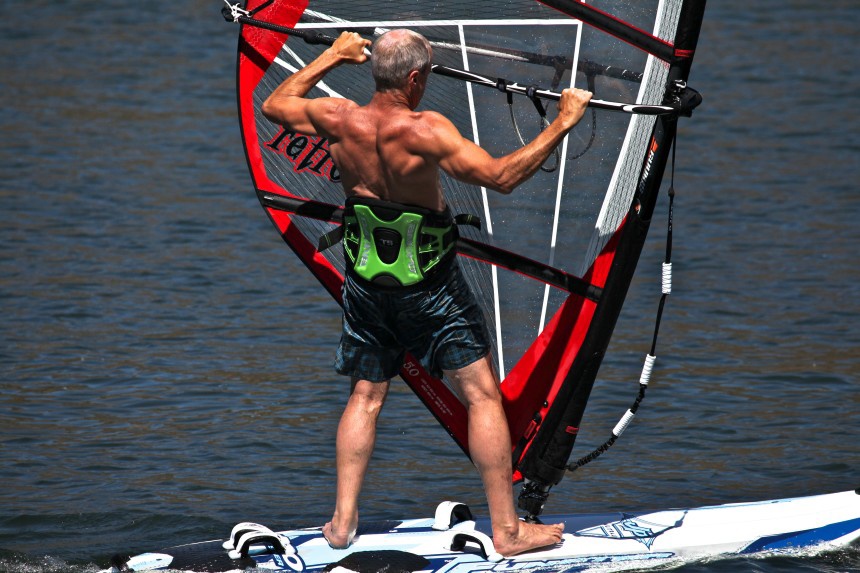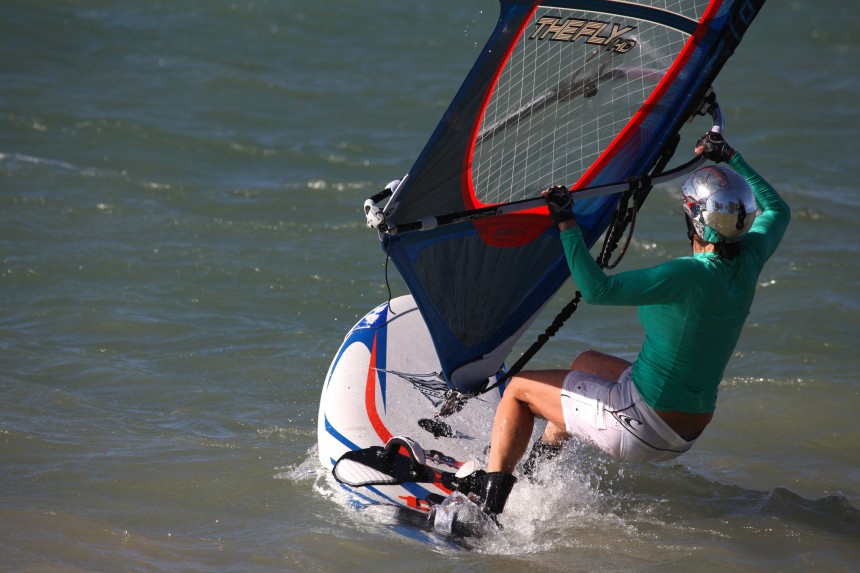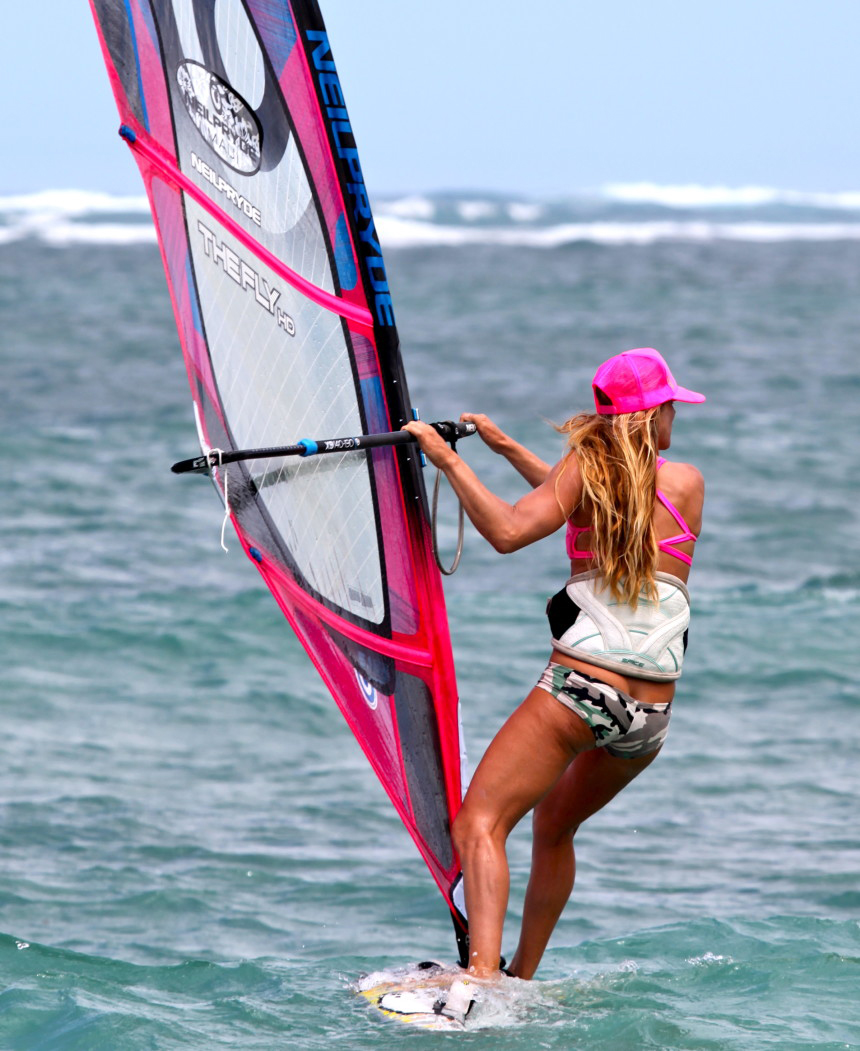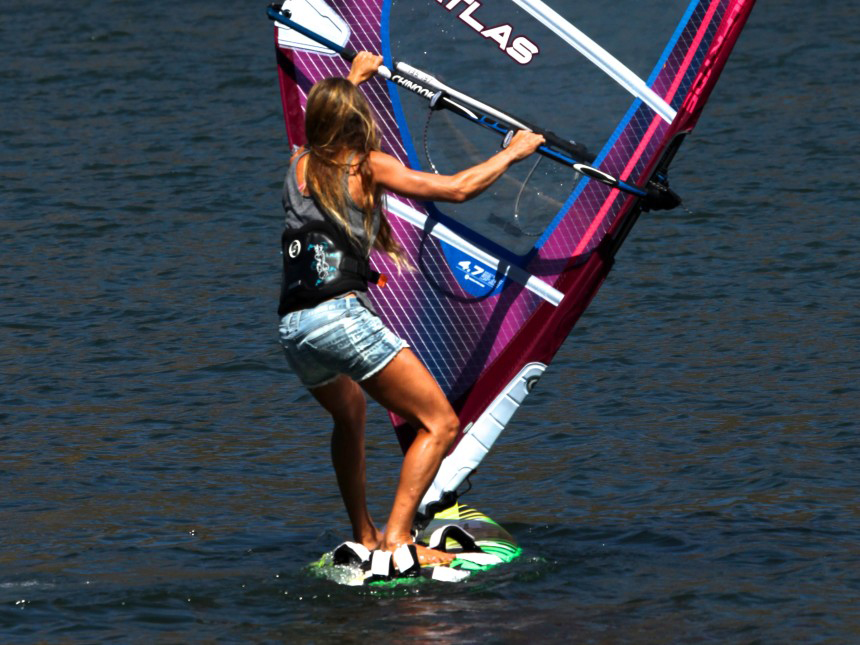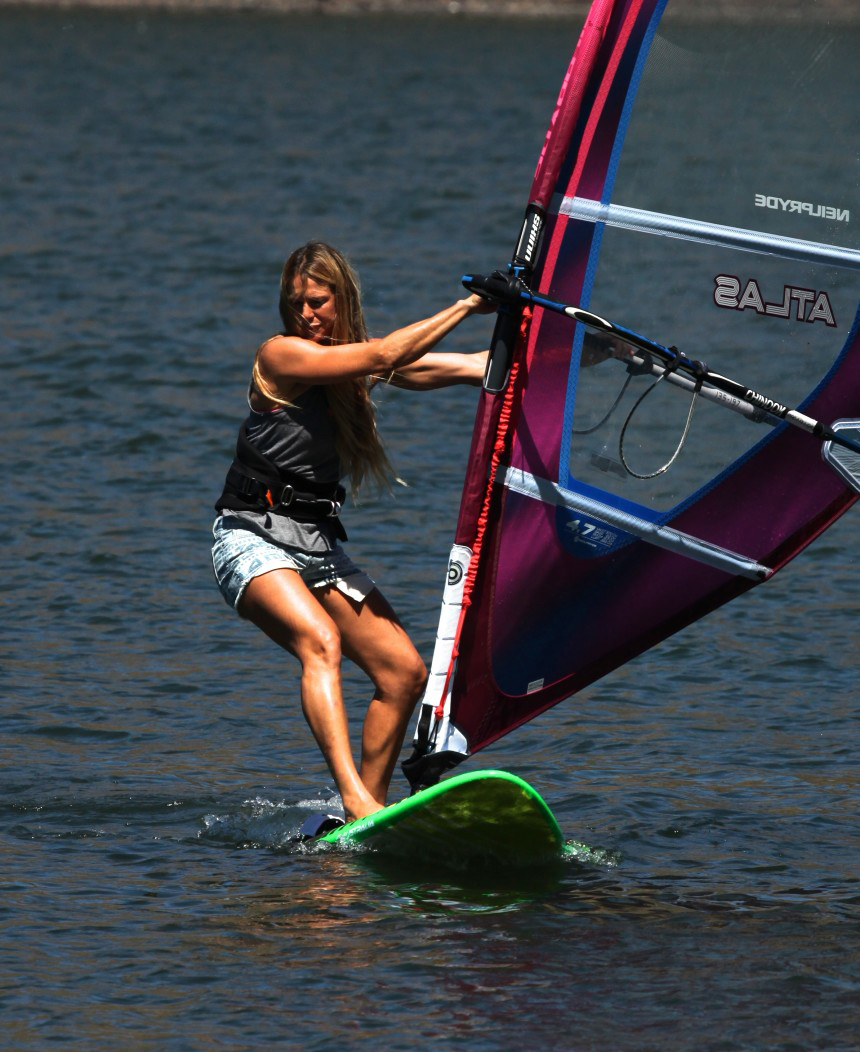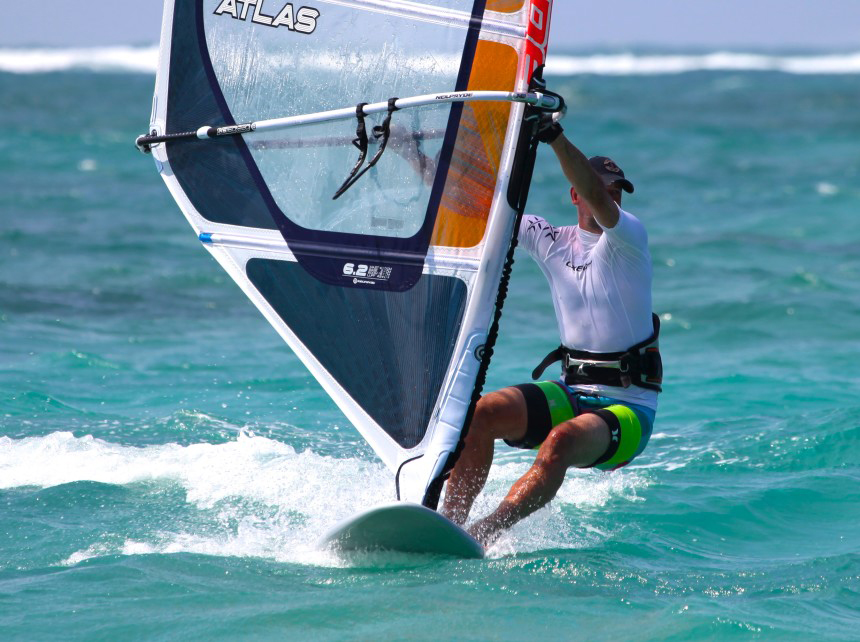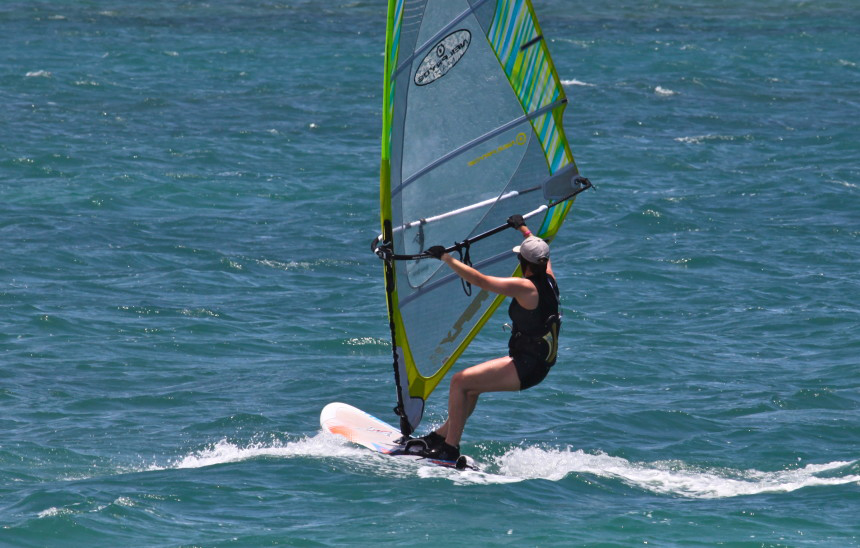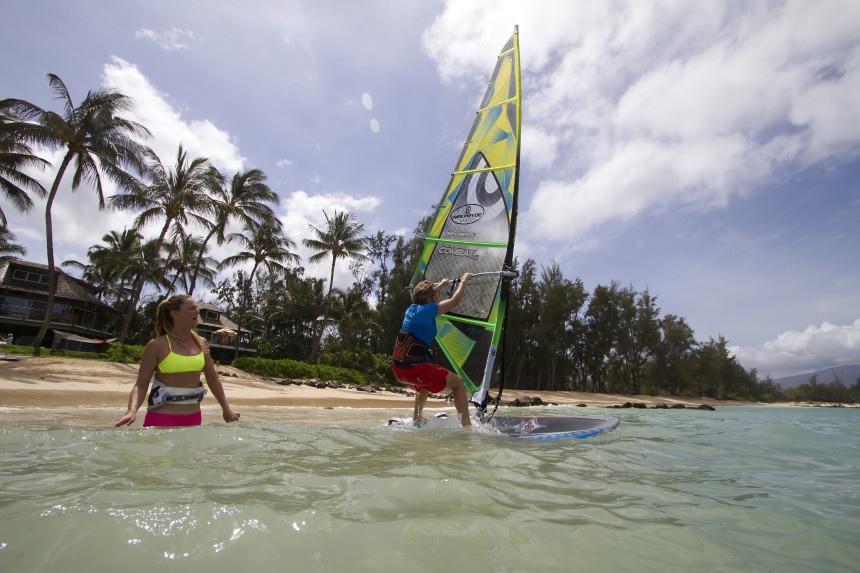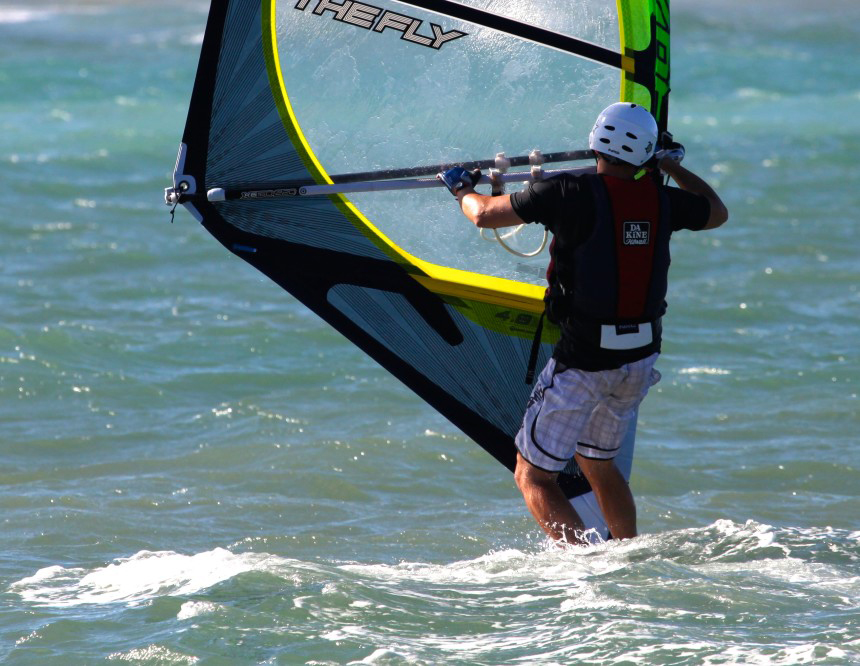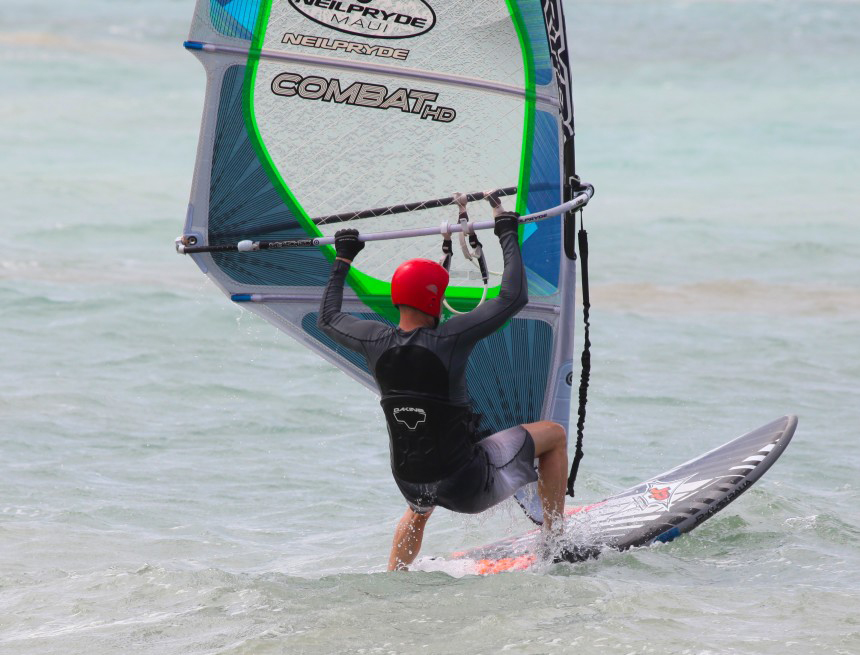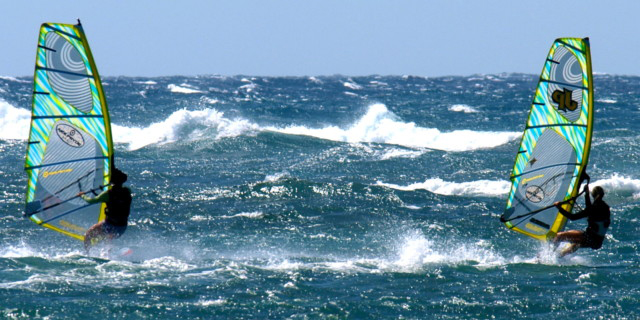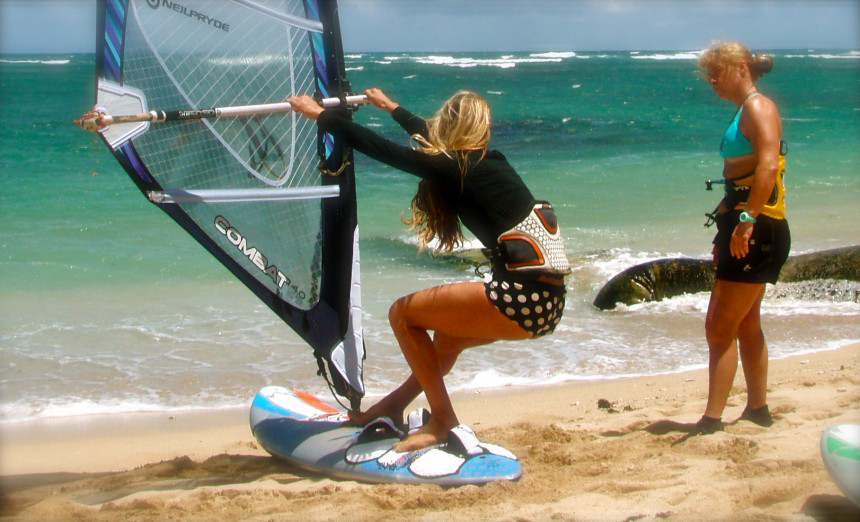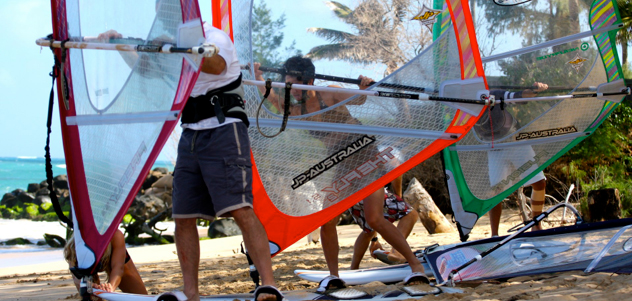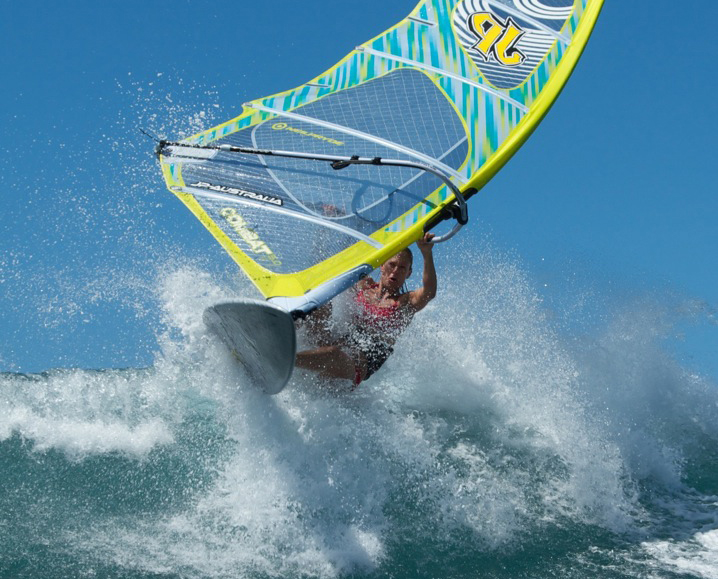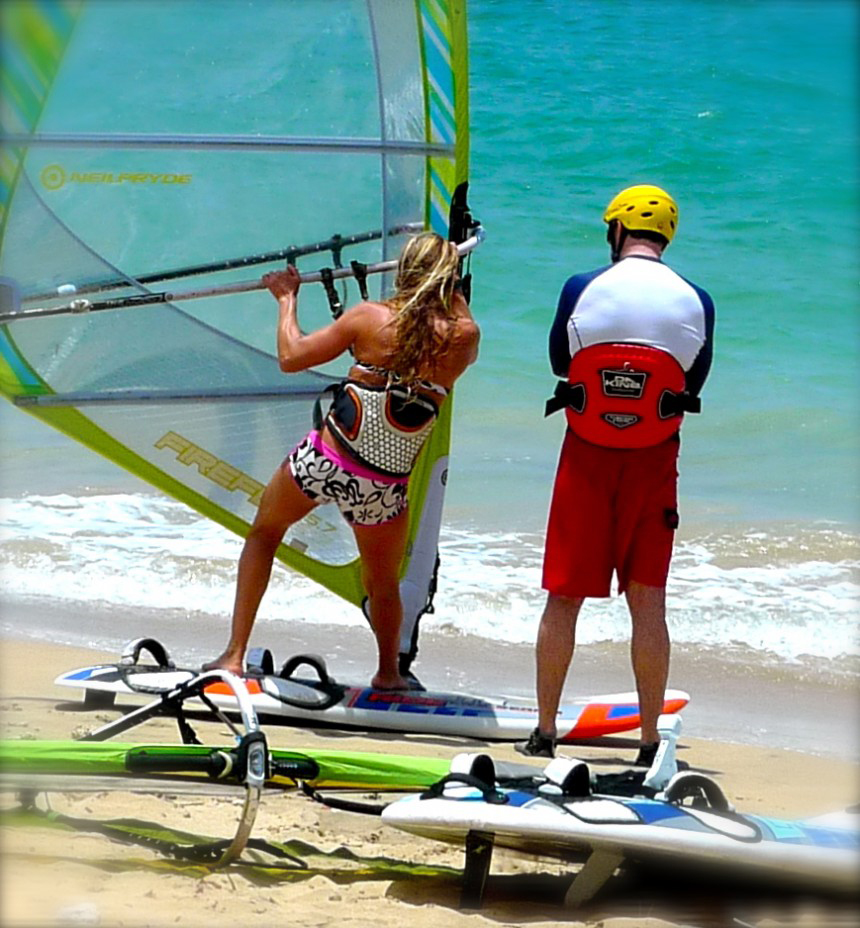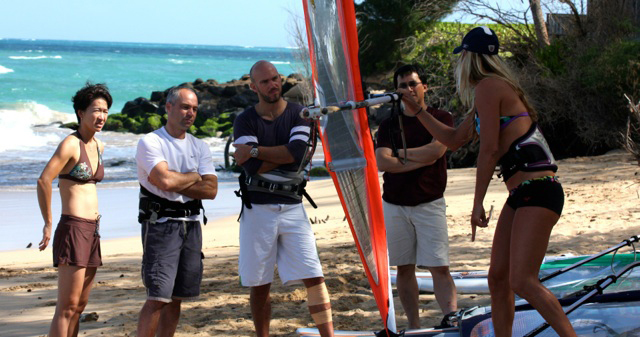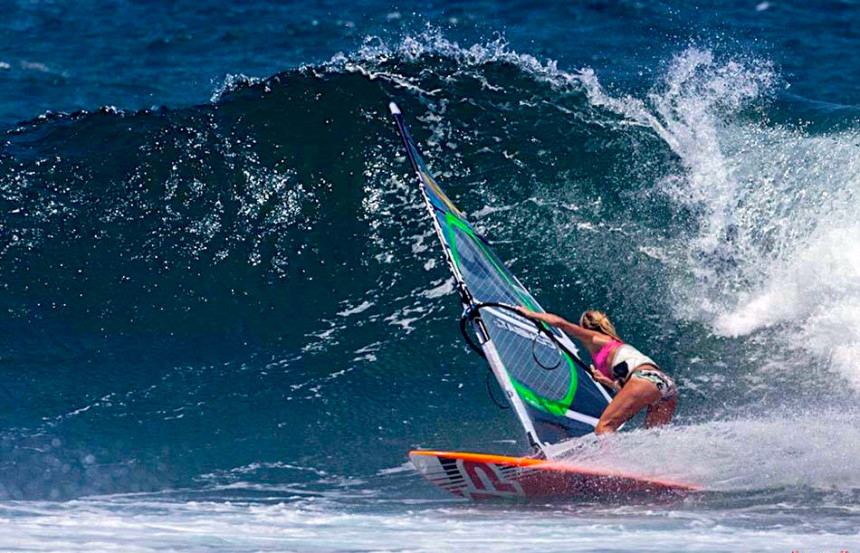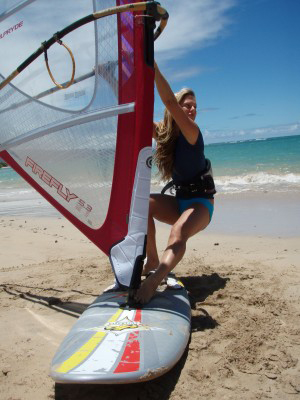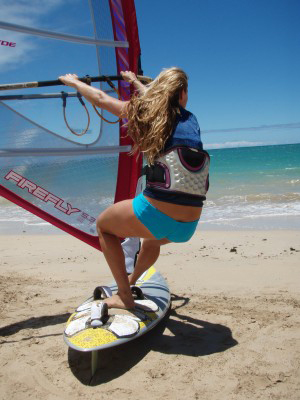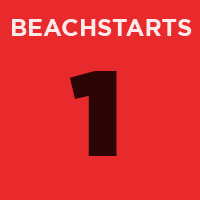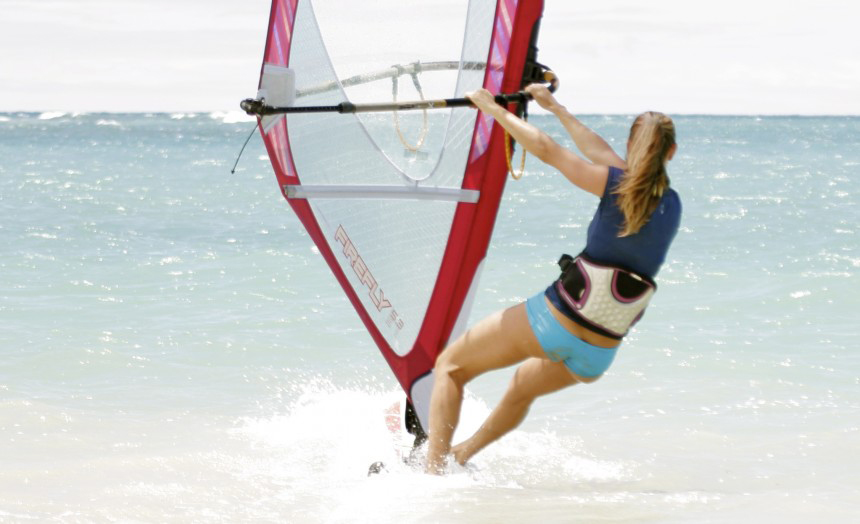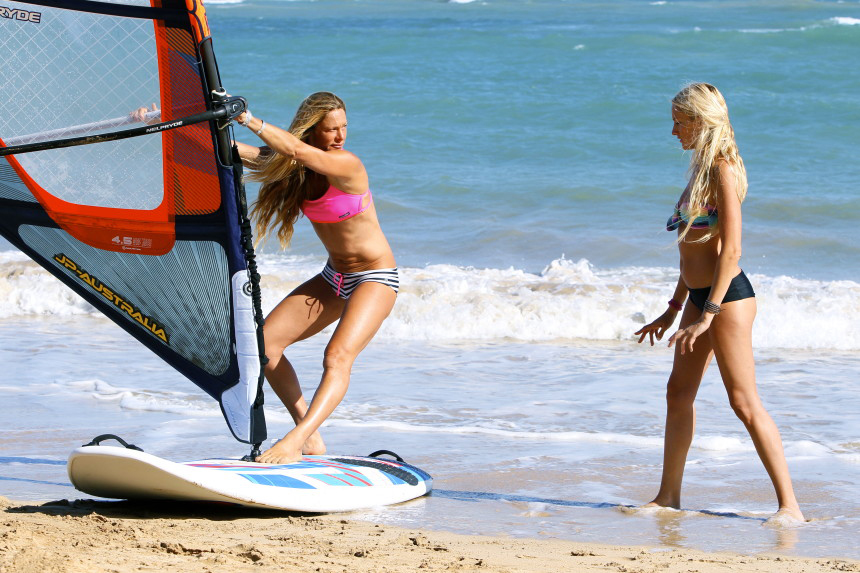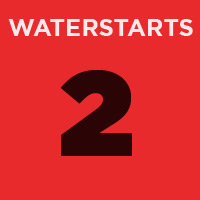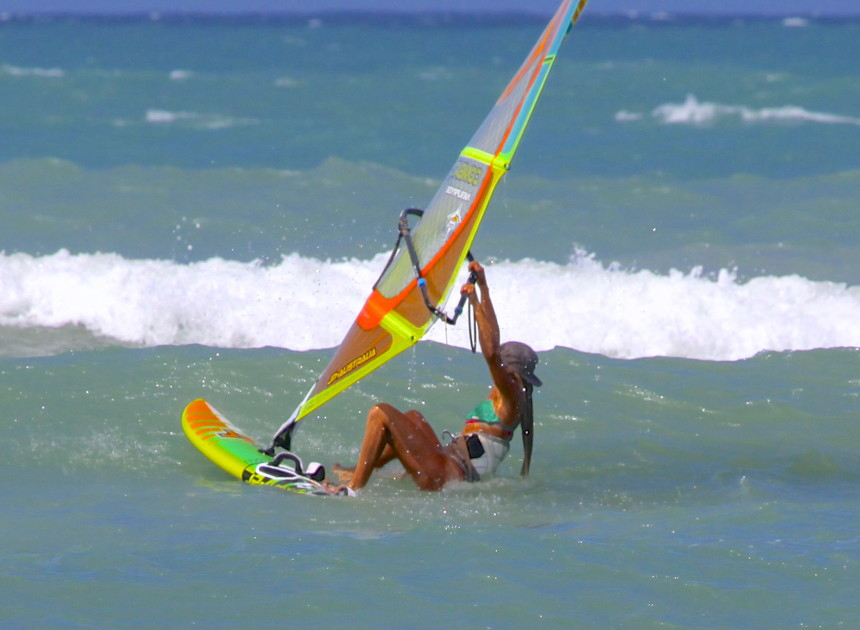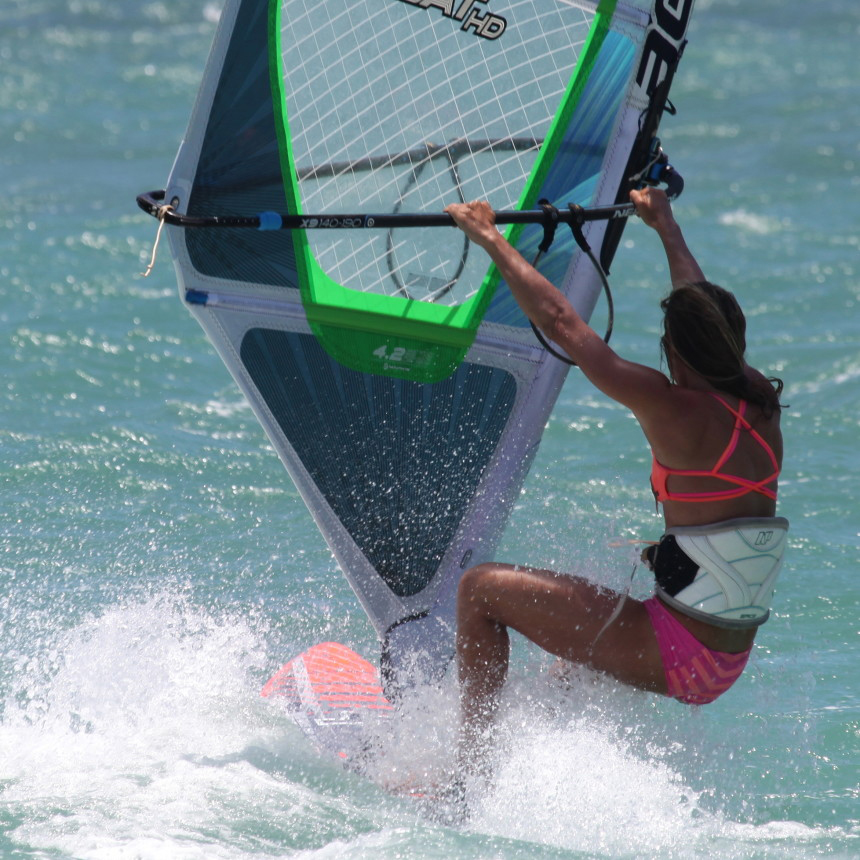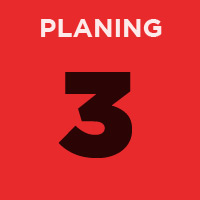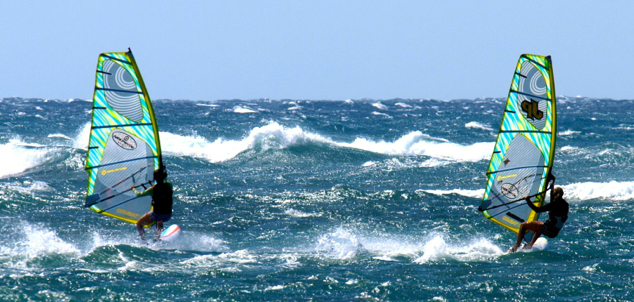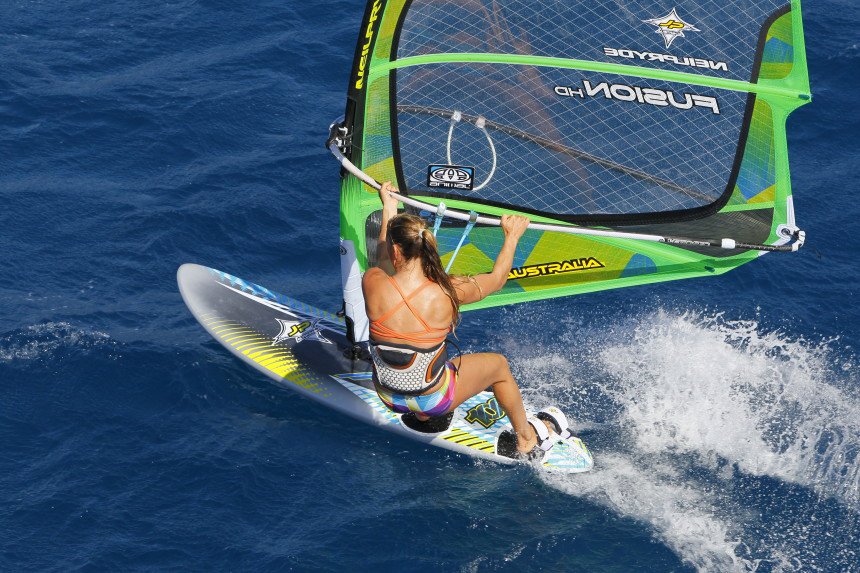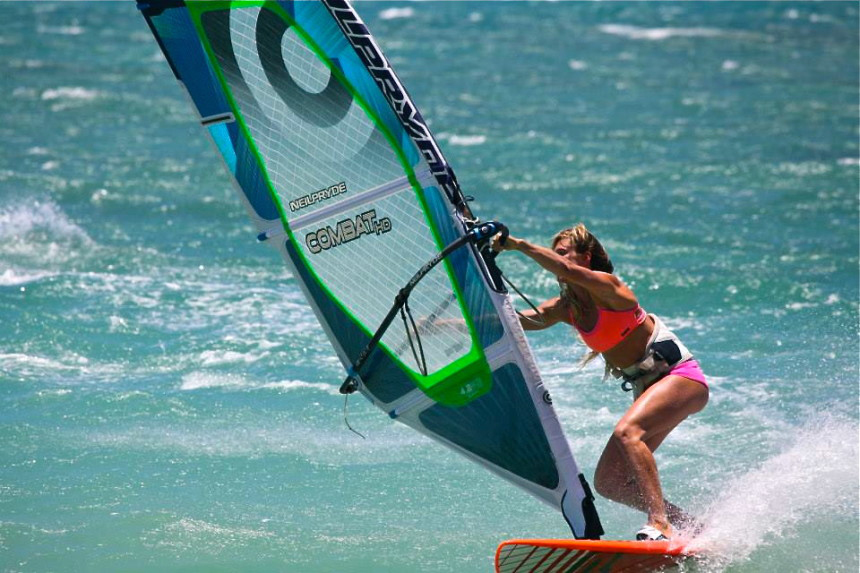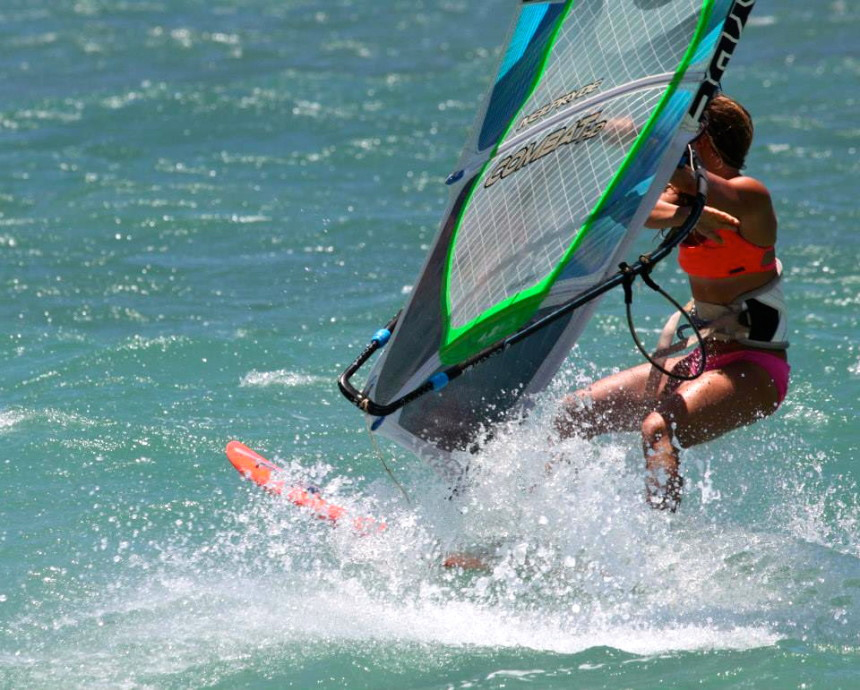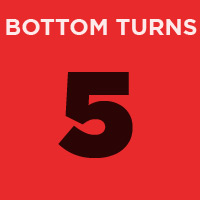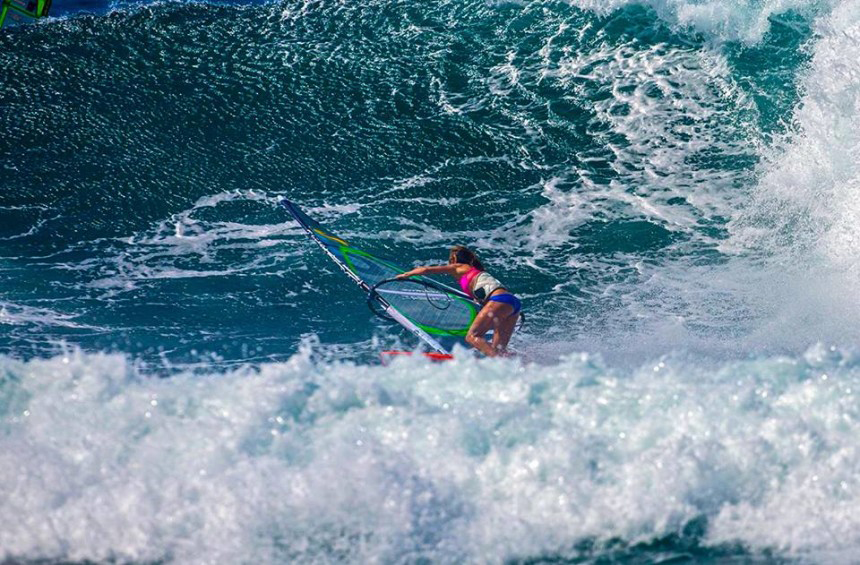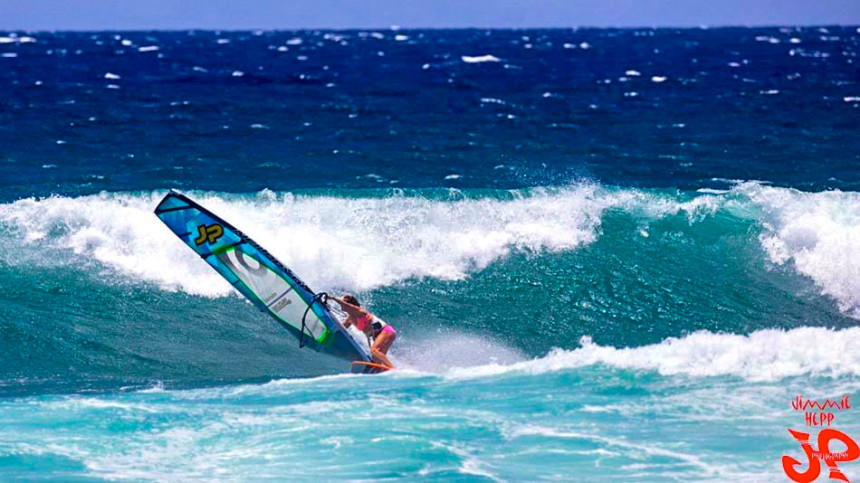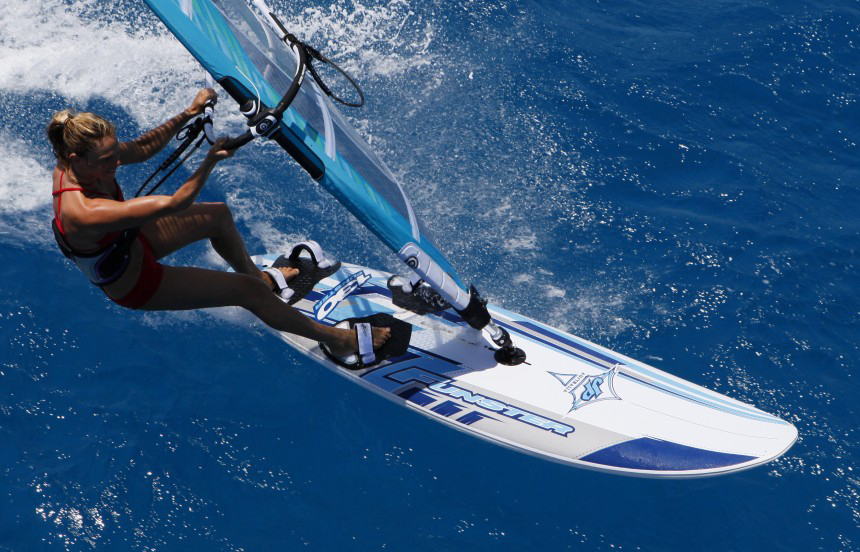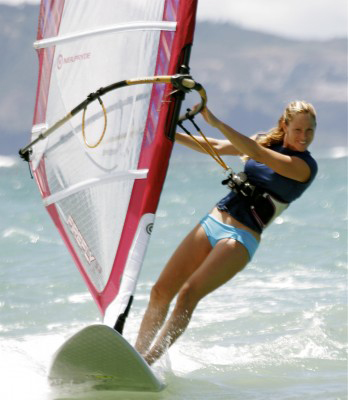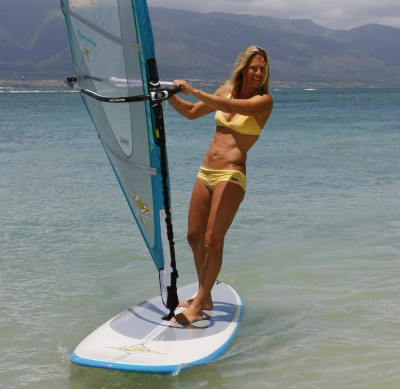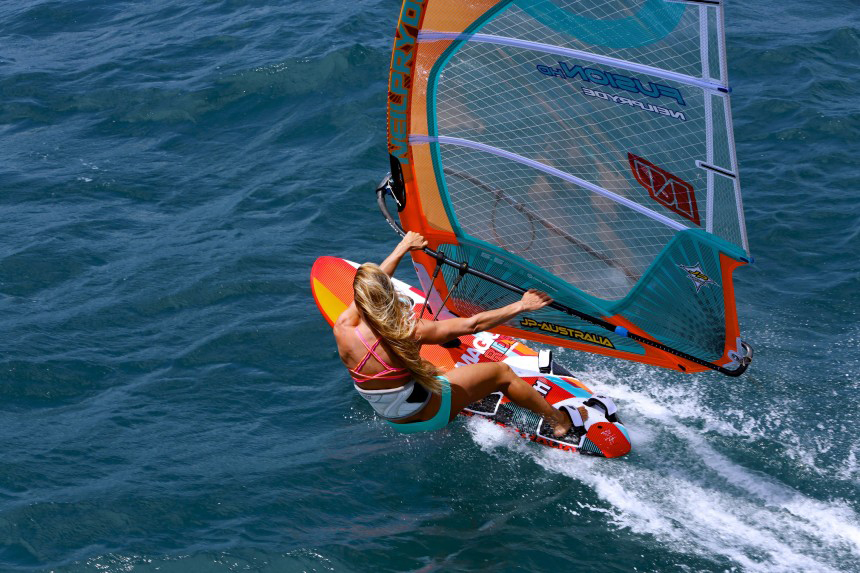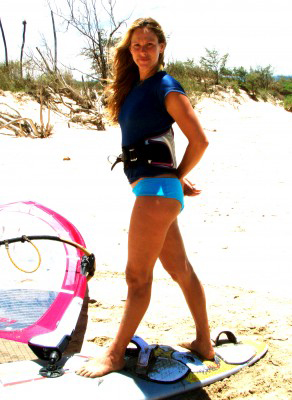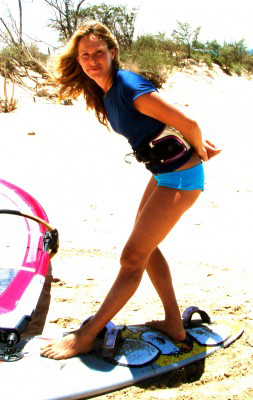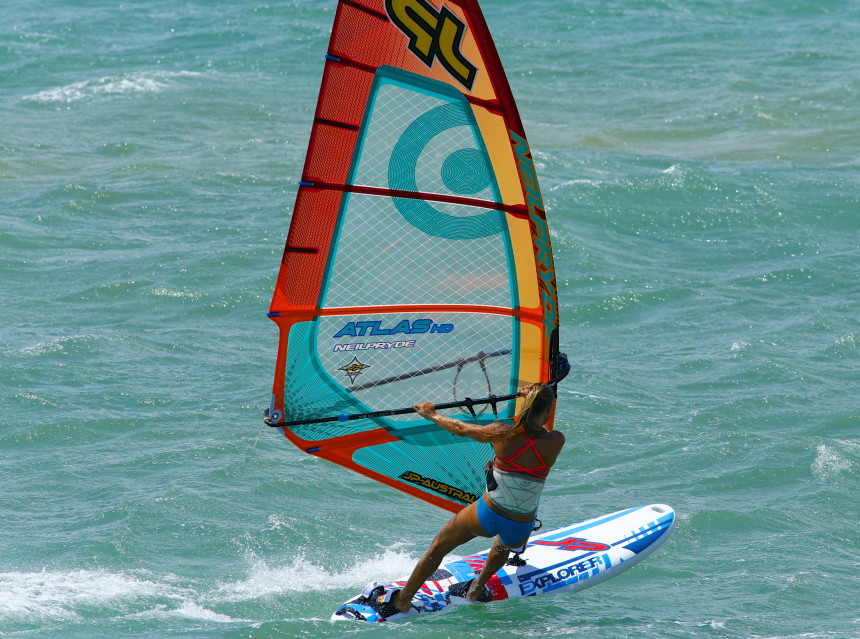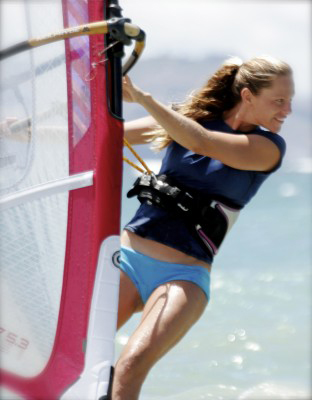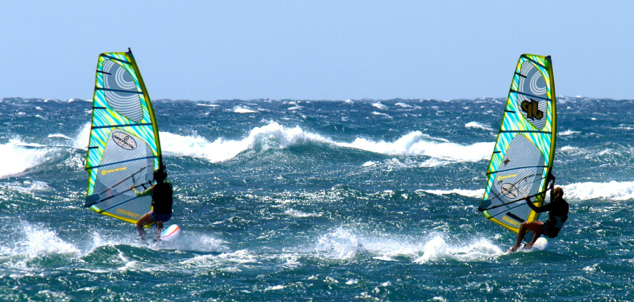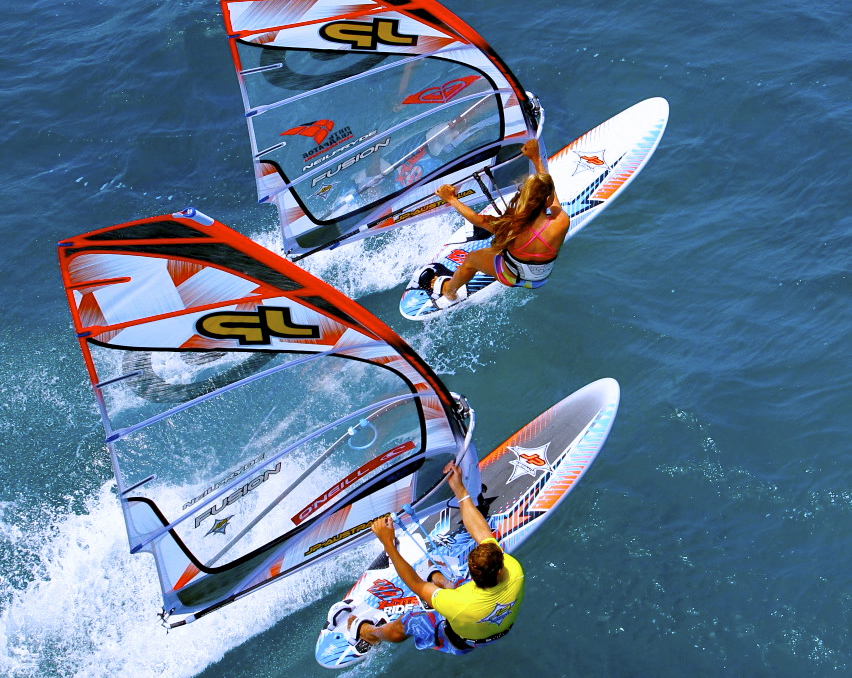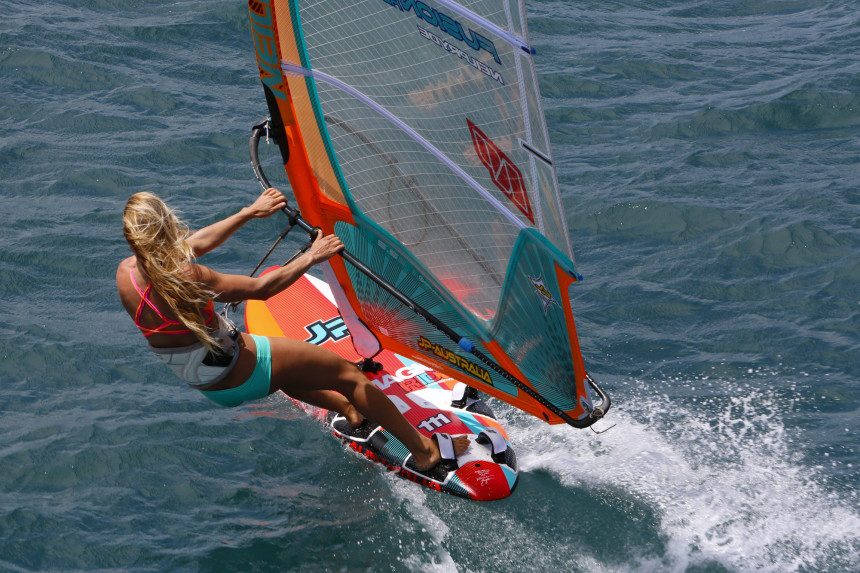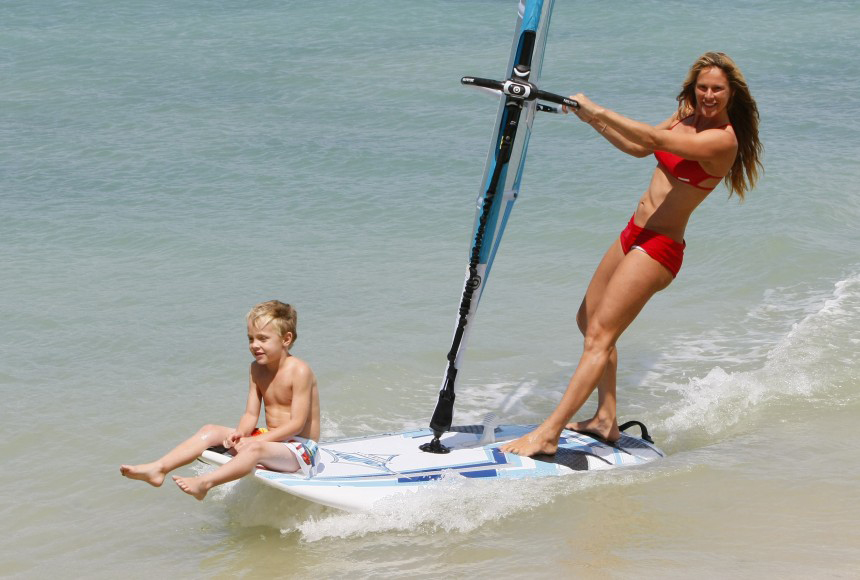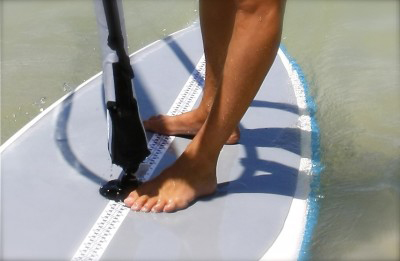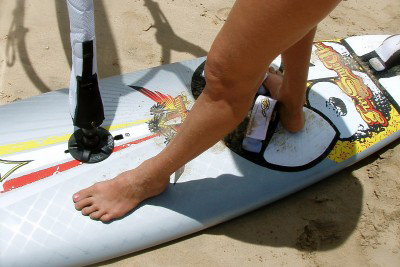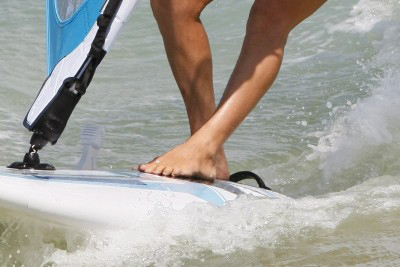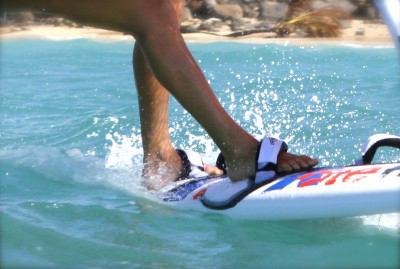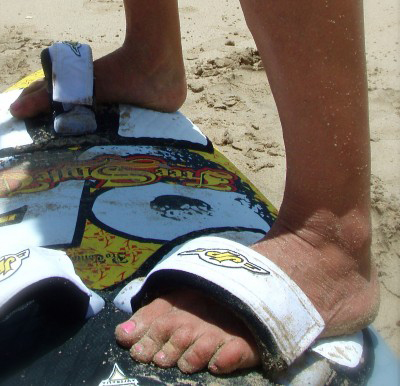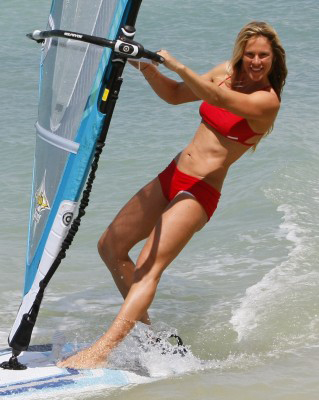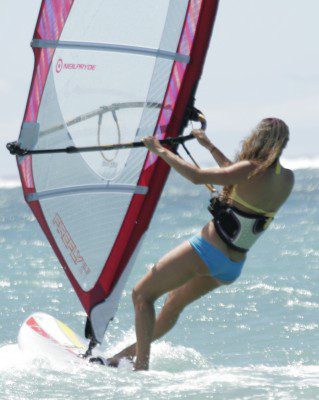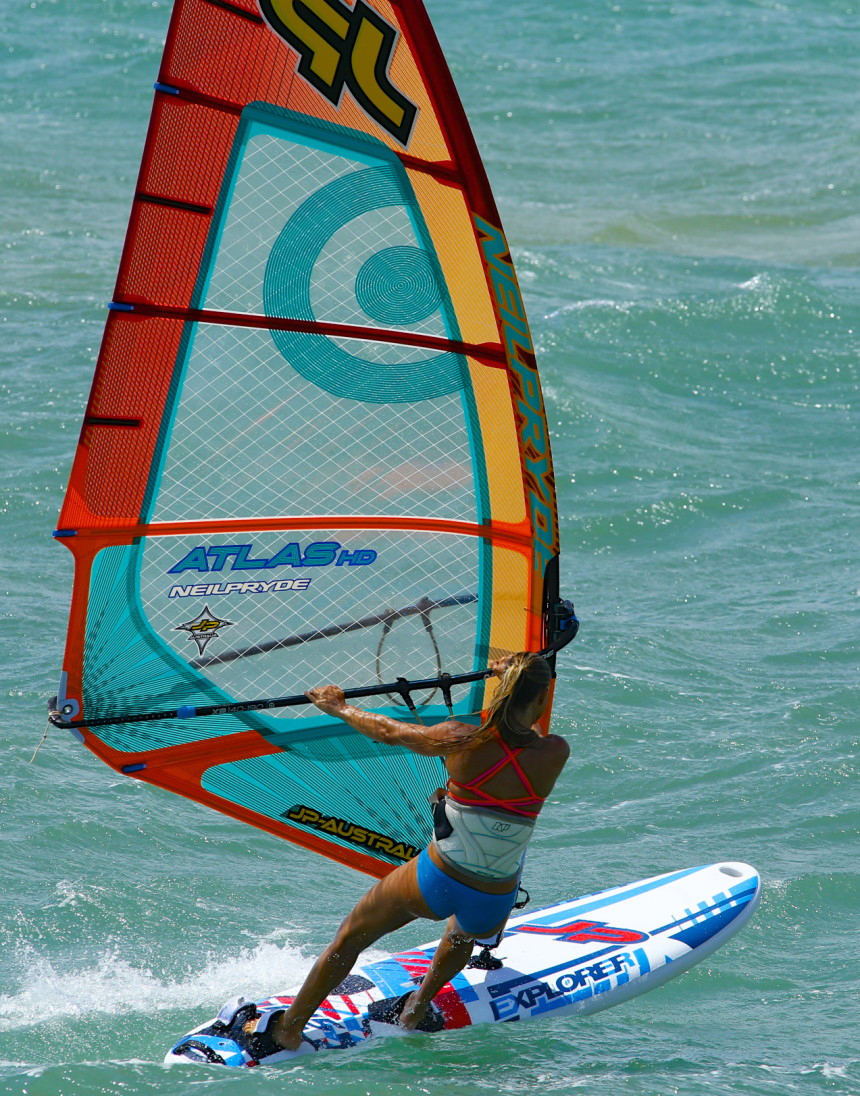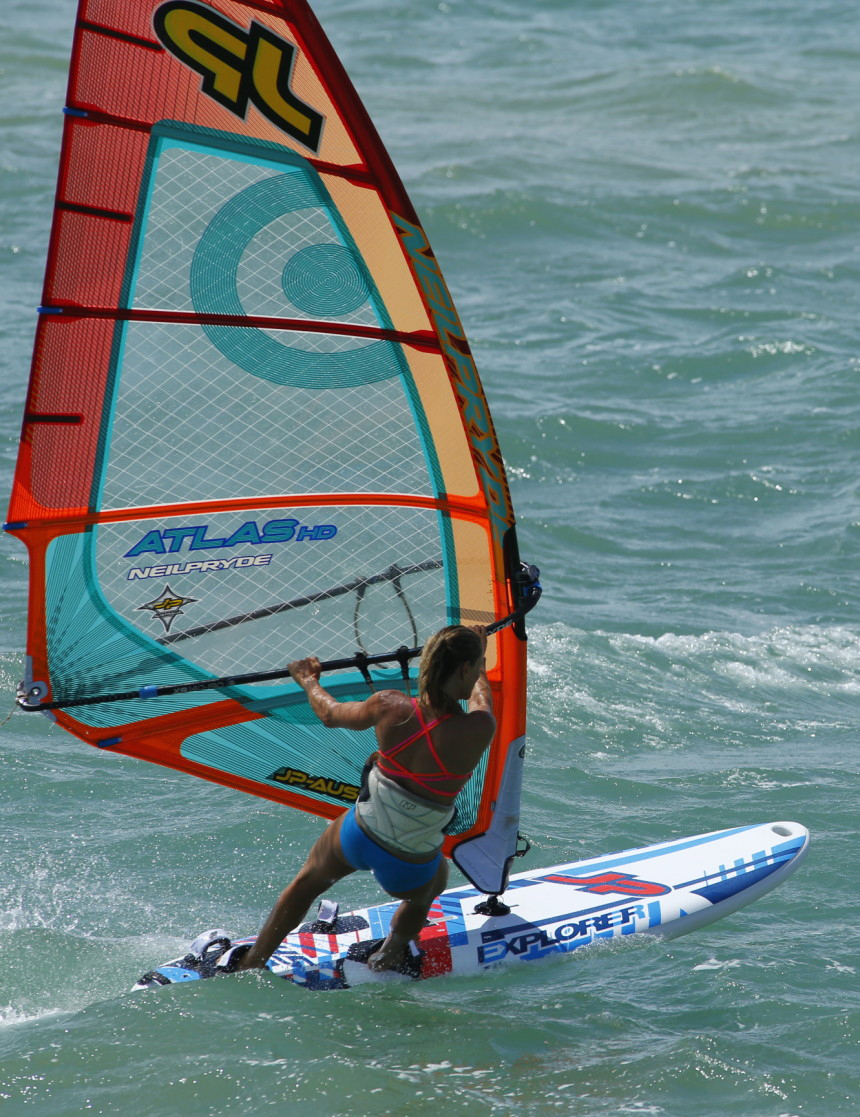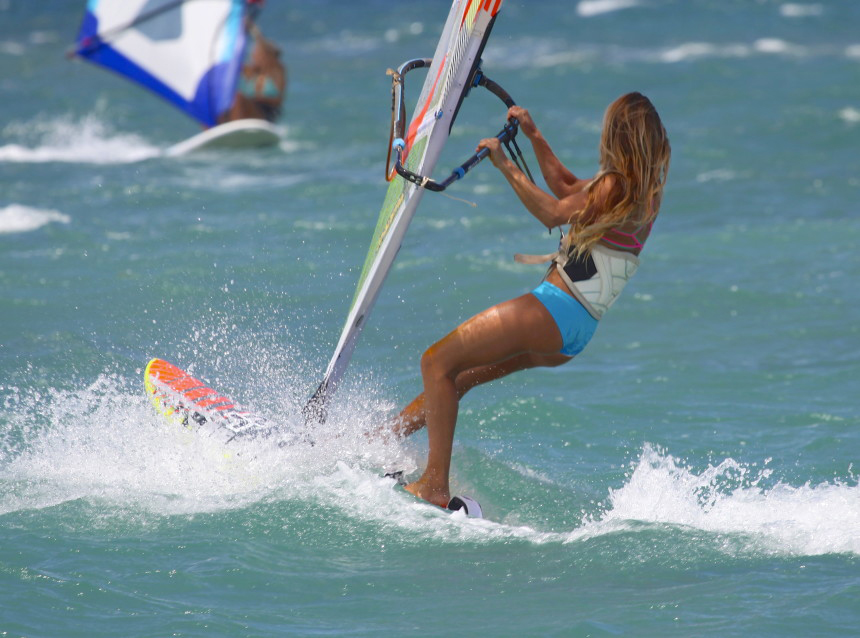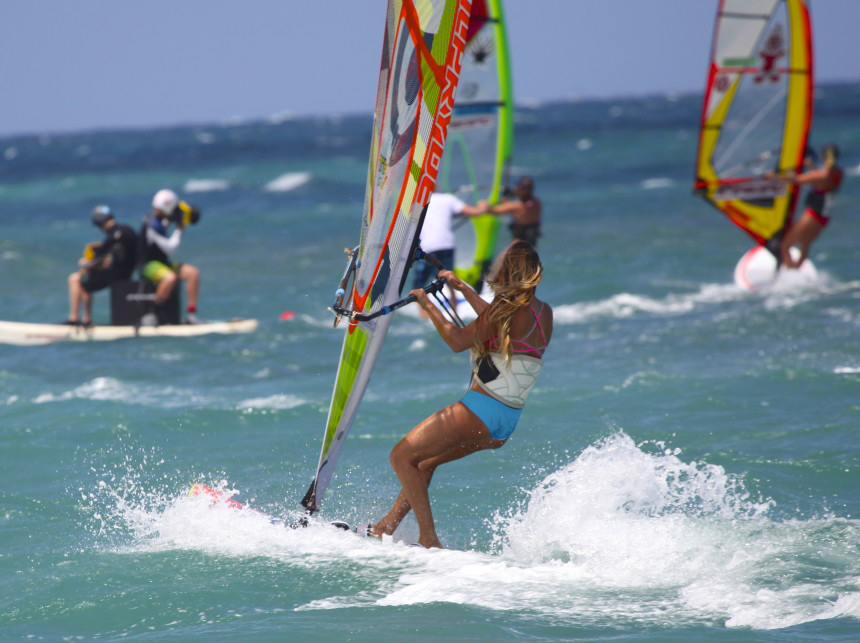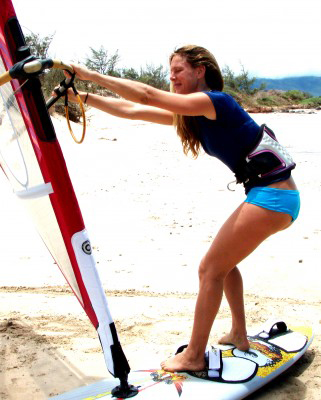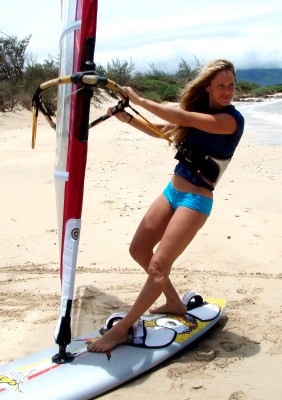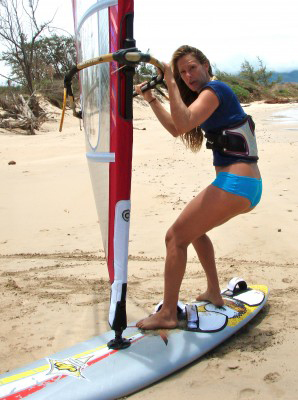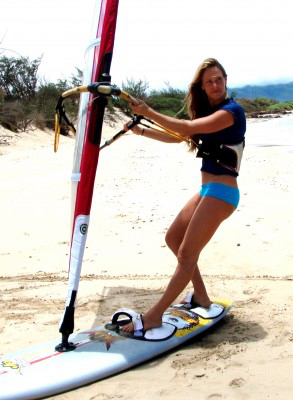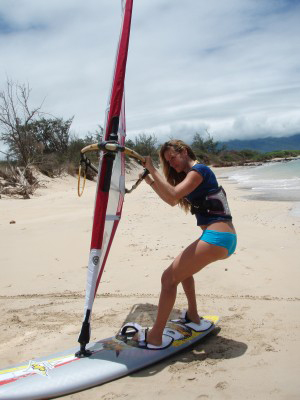The Writing is on the Water
Early planing skills requires the ability to:
1. Correctly read the speed of wind on the surface of water.
2. Radically change the direction of our board in relation to the wind.
3. Commit 100% to the harness lines.
4. Readily adjust our stance when needed.
Correctly Reading the Wind
Reading the patterns of wind as it sweeps across the surface of water is one of the most undervalued ‘core skill’ in windsurfing. If we cannot read the “writing on the wall,” in our case ‘on the surface of water,’ then there is no way to preempt or prepare the correct stance for the angles or strengths of wind coming our way.
All our acquired stance skills and understandings of board direction in harmony with wind angles become obsolete if we are not able to read the wind. We must be able implement the correct use of our body’s weight to counteract the power in the sail or lack of power at the correct moments. This can only be achieved with highly tuned wind awareness.
If we are out of sync with the wind, we will constantly tread on the winds toes, like classic bad dance partners.
The Wind Leads. We Follow. Not the other way around.
Just like learning to read. We need to first look at the letters to become familiar with their shapes before relating a sound to them. We cannot learn to read if we never look at the letters on the page. Same with reading the wind. We cannot learn to read the wind if we never look upwind to see the patterns different wind strengths make on the water as it comes towards us.
Some say they feel it- But probably just a little too late. If a gust hits us while we are still in a upright stance we will be over the handle bars in a second or falling off backwards if we did not anticipate a lull. We’ll maybe even come in and complain that we keep coming off the plane, that there is not enough wind and or it’s too gusty-
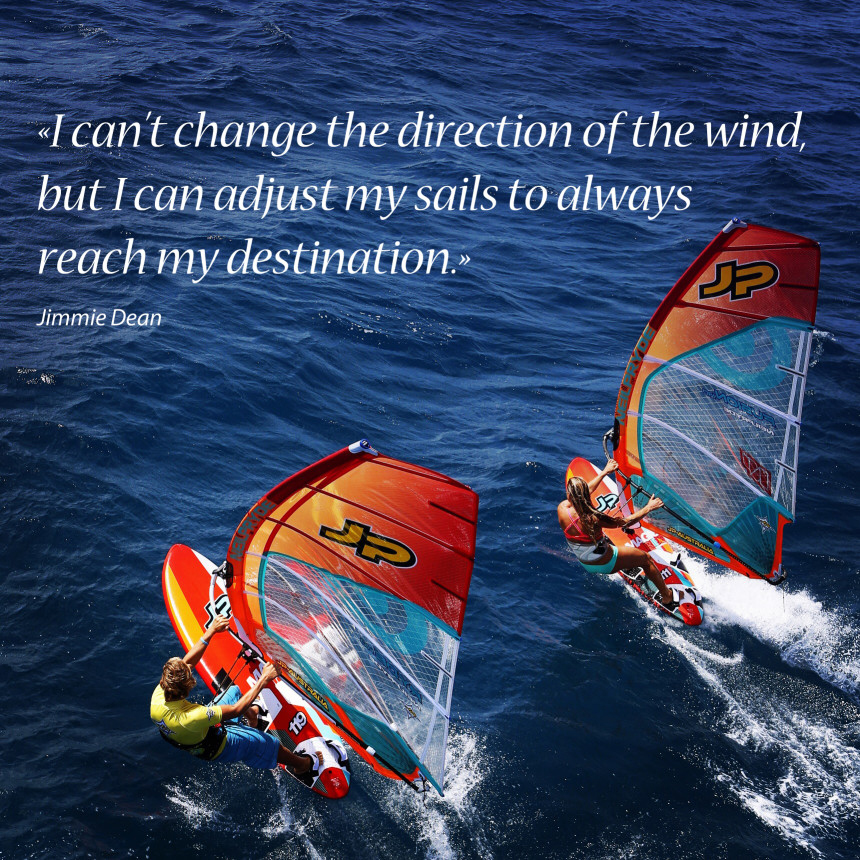
Reading wind
We read the chicken scratch surface texture the wind makes on water not the bigger choppy waves. Flat water is easier to read for this reason.
One day when you are resting at the beach. Try and stare at the water more and see if you can spot the lulls and gust.
Gusts
A gust looks like the wind has taken a file to surface of water and roughly scratched it. The more wind the more roughly filed the surface of water looks- If it’s sunny the ‘sparkles’ are more close together like the photo below. Can you spot the patch of unruffled water surface that indicates a strip of almost no wind- Literally a burst of no wind (lull) in an otherwise very windy patch of water?
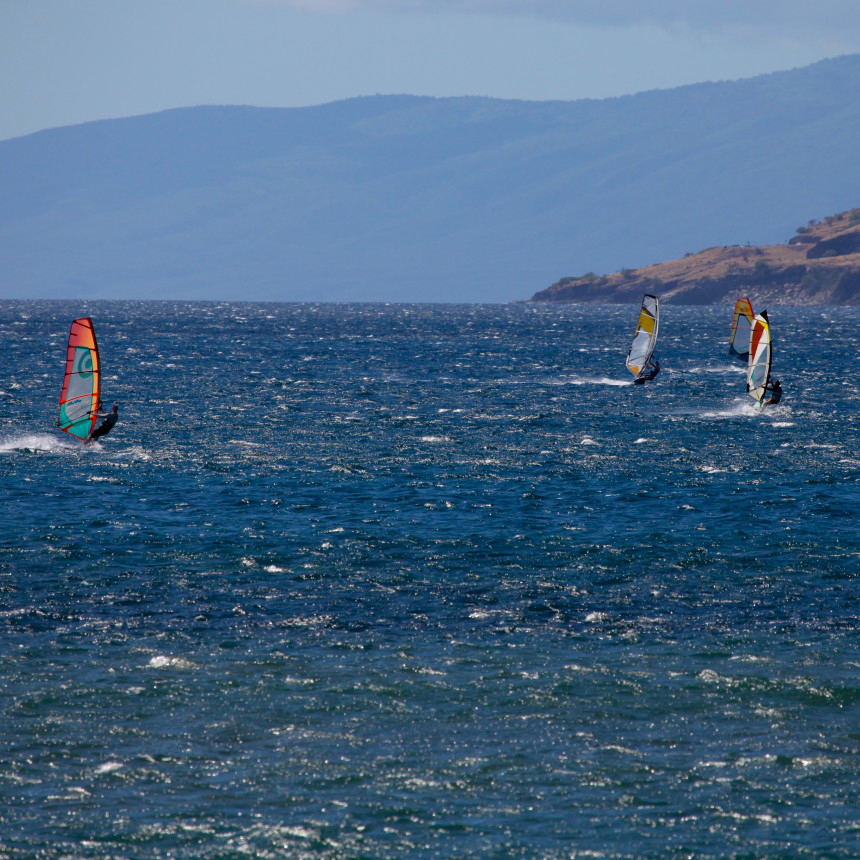
Lulls
The surface of water looks more polished and if it’s sunny the sparkles on the water are not as close together like photos below:
What is the wind doing in this photo below?
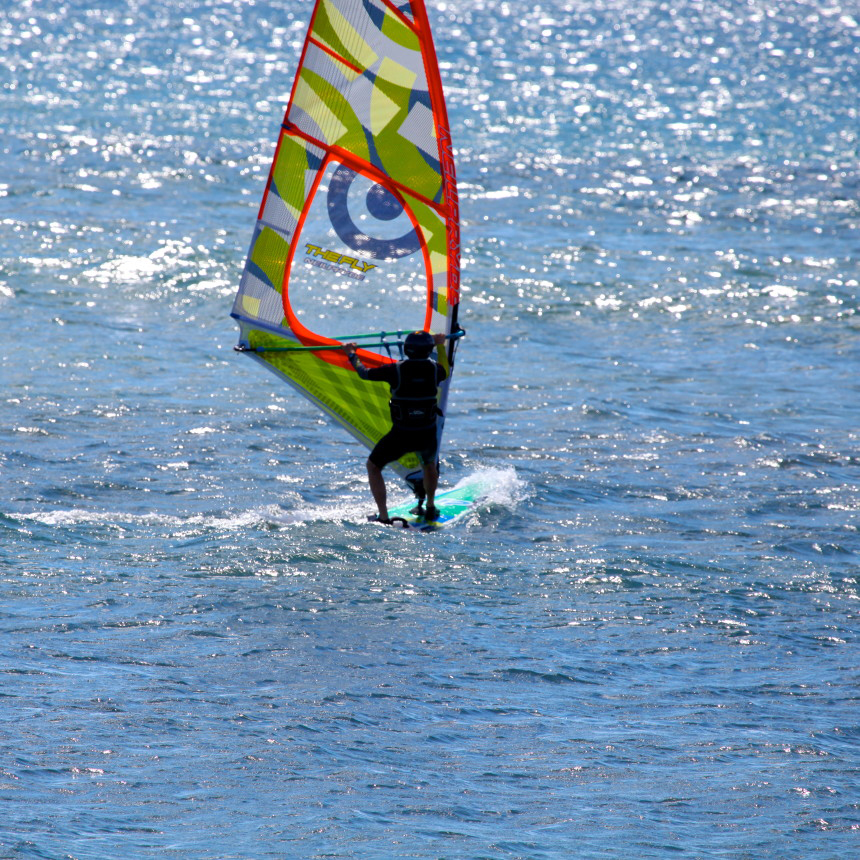
1. Wind is coming from the right
2. Loose scatter of sparkles mean there’s light wind close to shore.
3. Close together sparkles mean there’s higher wind on the outside.
4. Which mean it’s probably blowing cross offshore.
5. Wind coming from off the land is probably more gusty- So we will have to pay more attention to the wind while we are sailing in order to plane through the lulls and hunker down in our harness for the gusts.
Board Angles
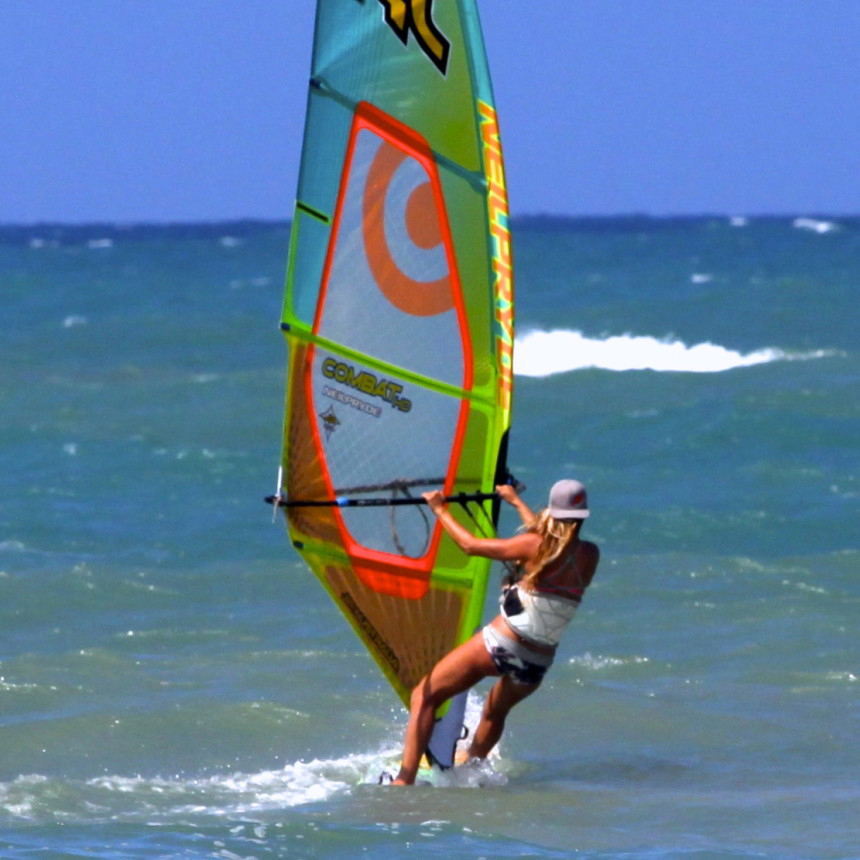
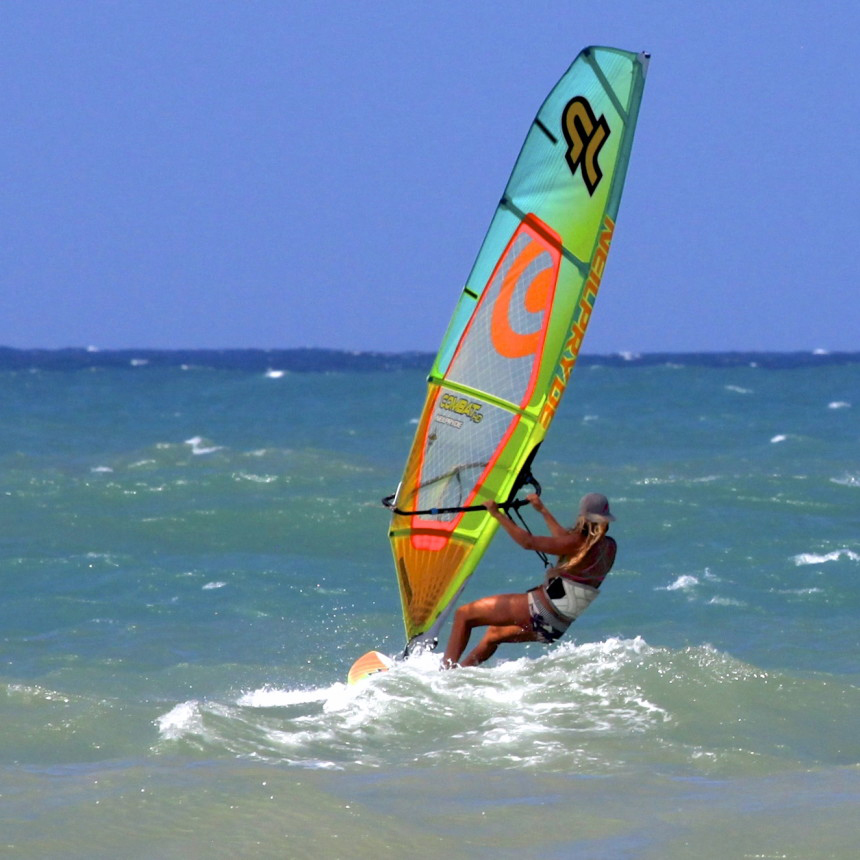
Once reading the wind has been mastered, we can think about radically changing the direction of our board in relation to the wind.
-----------------------------------
Angles of the board in relation to the wind:
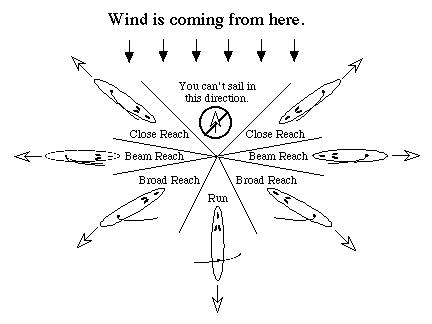
-----------------------------------
Especially on light wind days: Head upwind when we are not planing and when we first launch from any beach, hook in and Close Reach until we find a gust strong enough to use for planing or until we hit the wind line. Heading upwind in light winds is more stable than bearing off due to the way apparent wind works.
If we are not planing do not just drift down wind. Get into our light wind upwind stance and keep on a close reach.
Light Wind Upwind Stance
Front foot up beside the mast foot. If we are hooked in the weight is in the harness not the arms.
If we are not hooked in make sure we have space between our body and and the rig. Do not pull sail in with bent arms. Especially in super light wind situations when we are trying to get out to a wind line.
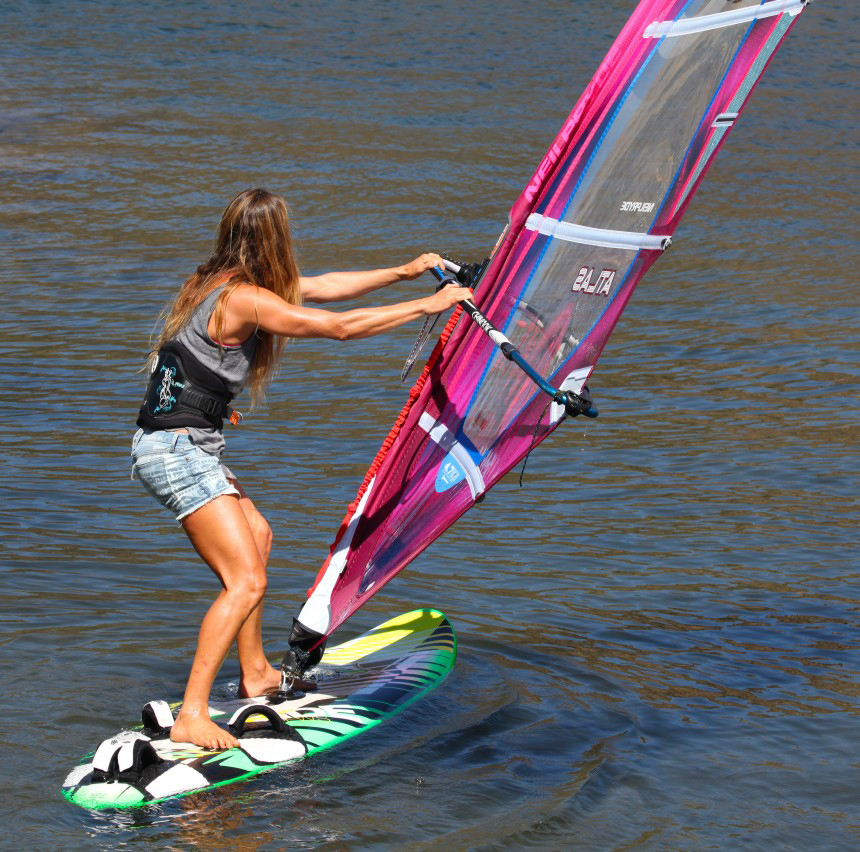
When we feel like it’s windy enough to get going, hook in if we weren’t already. Pull the board under our bum with our back foot and push through the balls of our front foot to scissor the board on to a Broad Reach maybe even touching onto a Run Reach. Make sure we sink more into our harness so we don’t get catapulted with the sudden power in the sail.



FYI: If we suddenly yank on our back hand- Releasing the tension of our body weight in the harness lines we will stall our efforts as we ruin mast foot pressure connection and sink the back of the board. It just takes a slight sinking of the tail to stall out.
If we do not get going with the burst of sudden change in the boards direction and we haven’t interrupted the flow of action with unnecessarily pulling the rig over the back of the board with our arms – then it’s not windy enough yet or we haven’t reached the wind line. Stop and head back upwind. Staying upwind is the biggest challenge of light wind days so let’s not lose unnecessary ground.
Stance
Be ready to change our stance all the time! This is the flow and rhythm part of windsurfing. In a lull we are more upright and in a gust we sink deeper into our harness lines like the photos below:
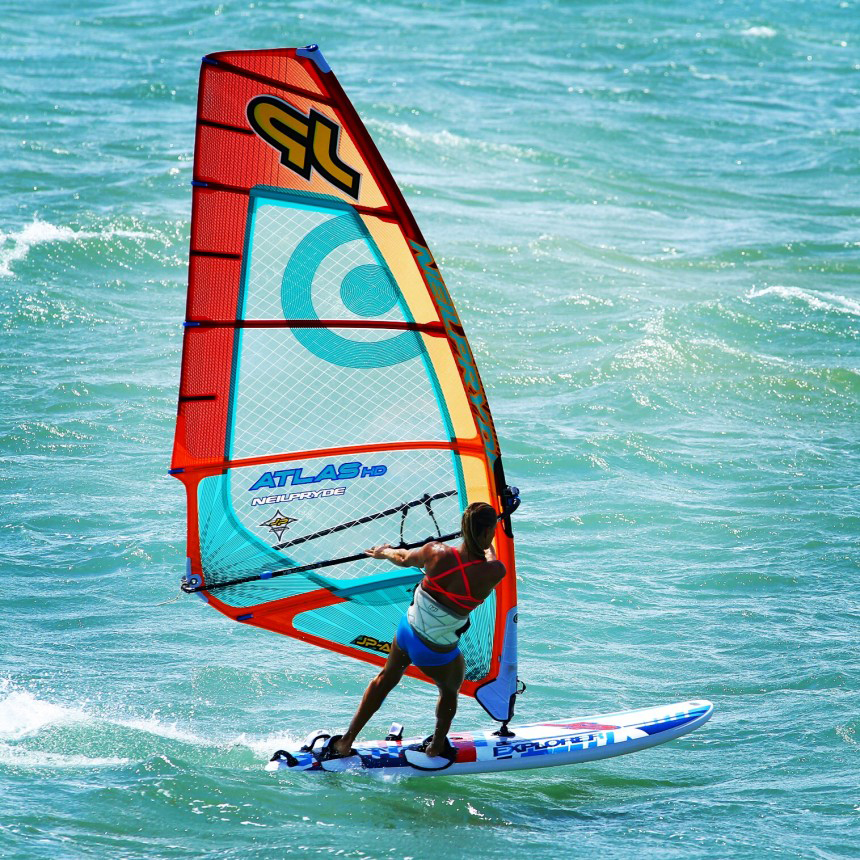
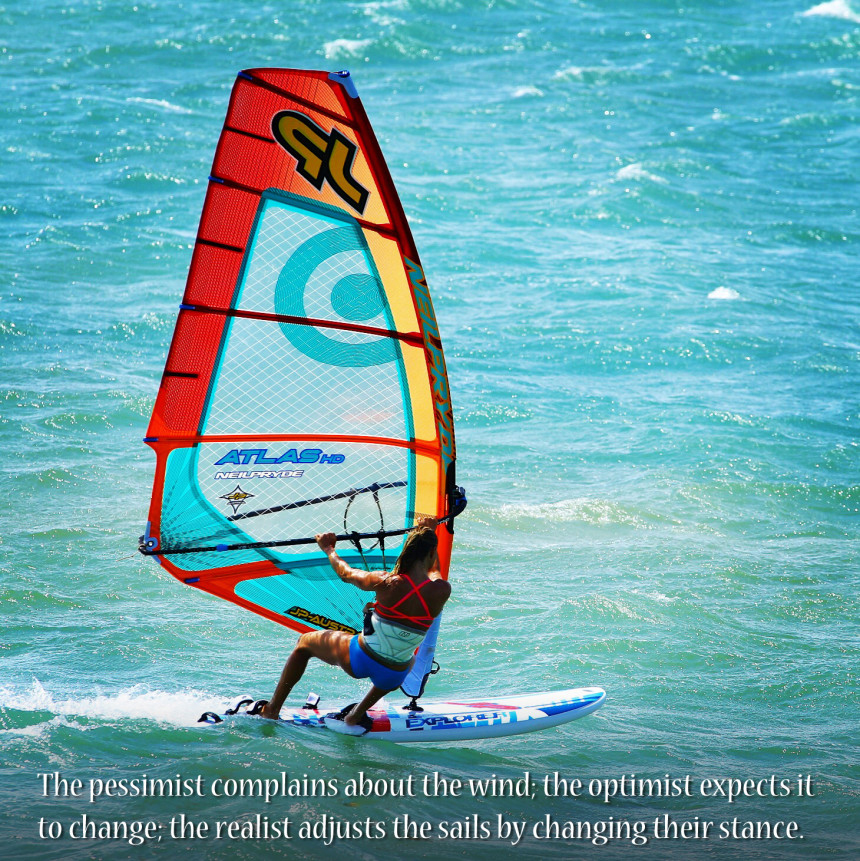
Happy Sailing.
Shawna


